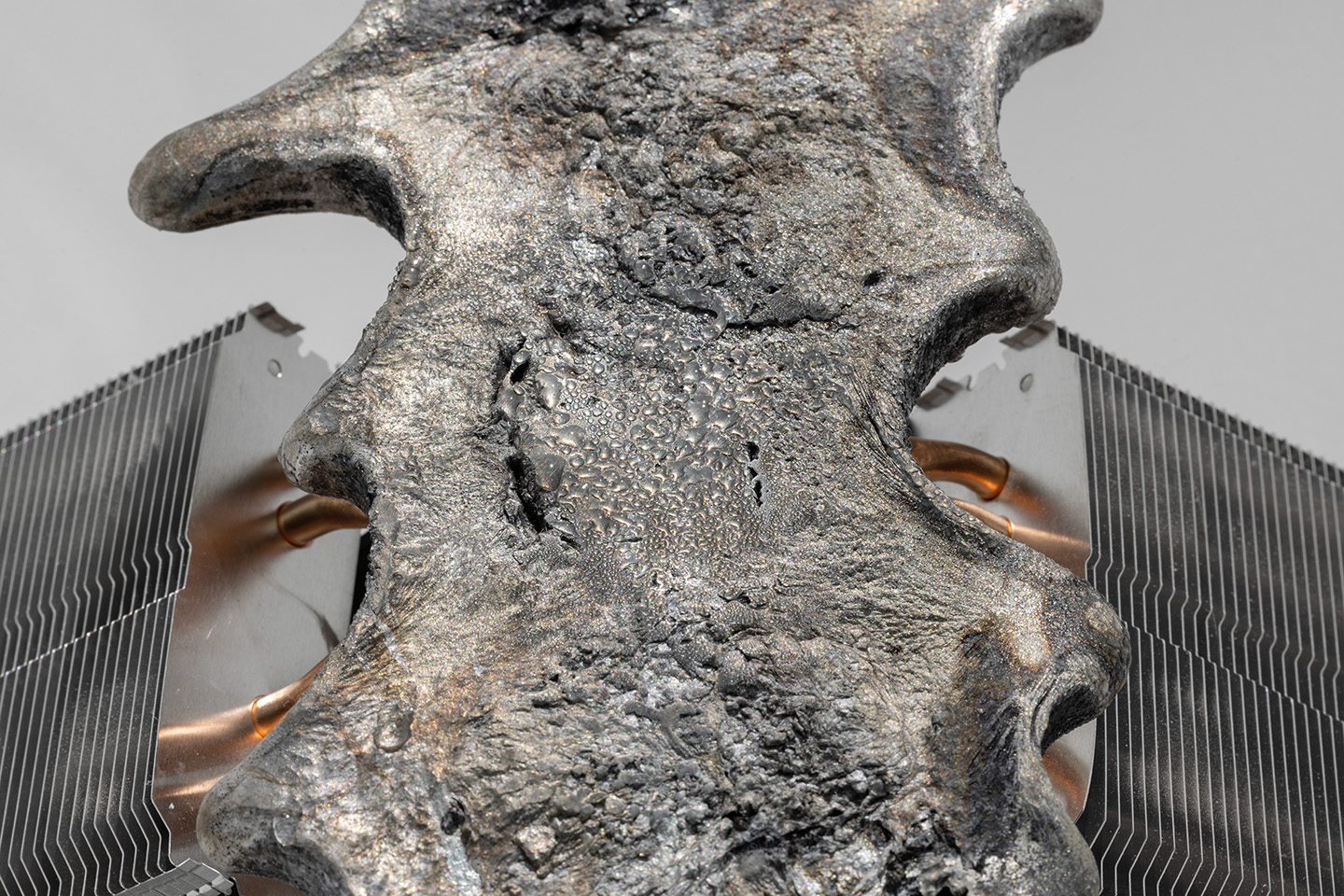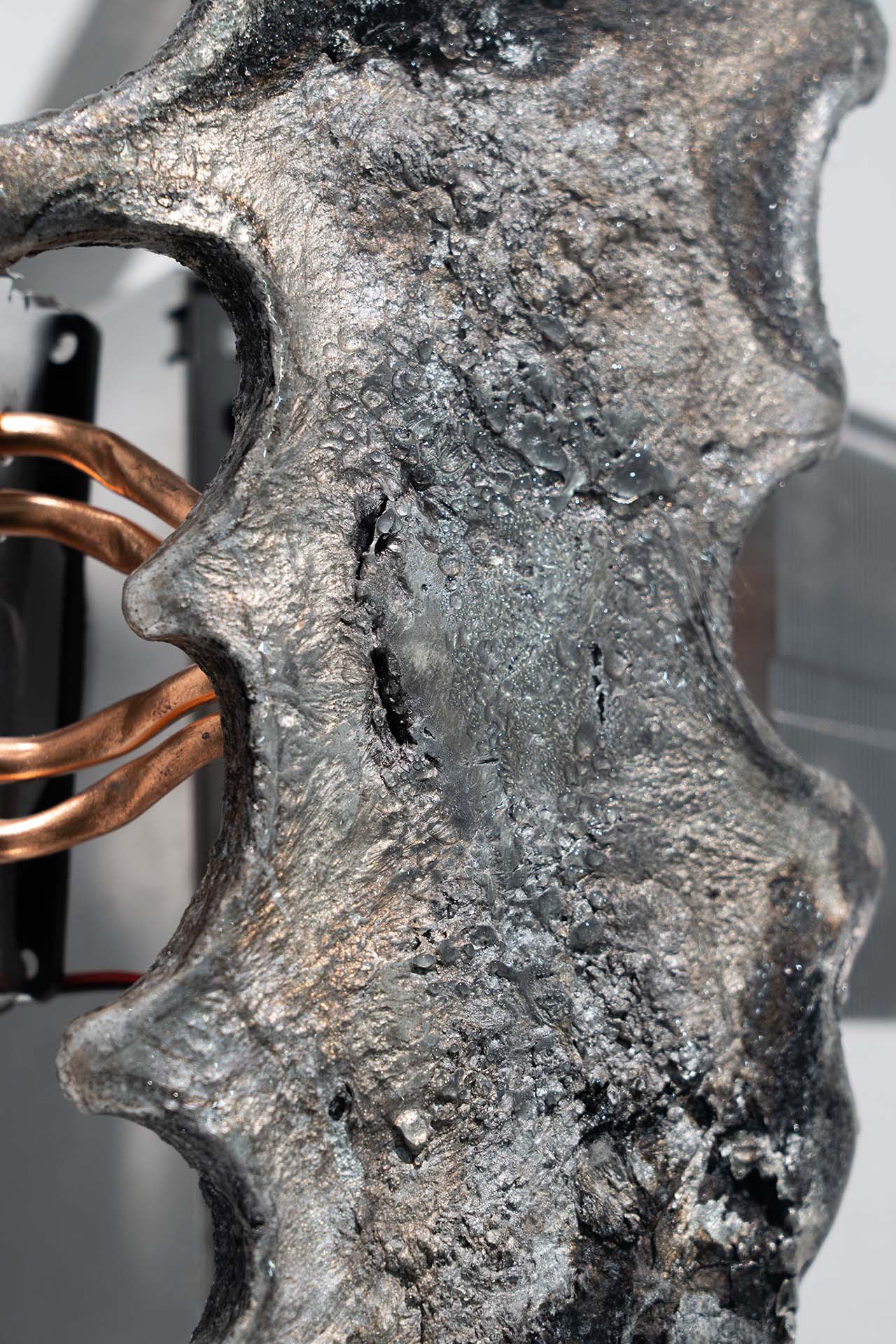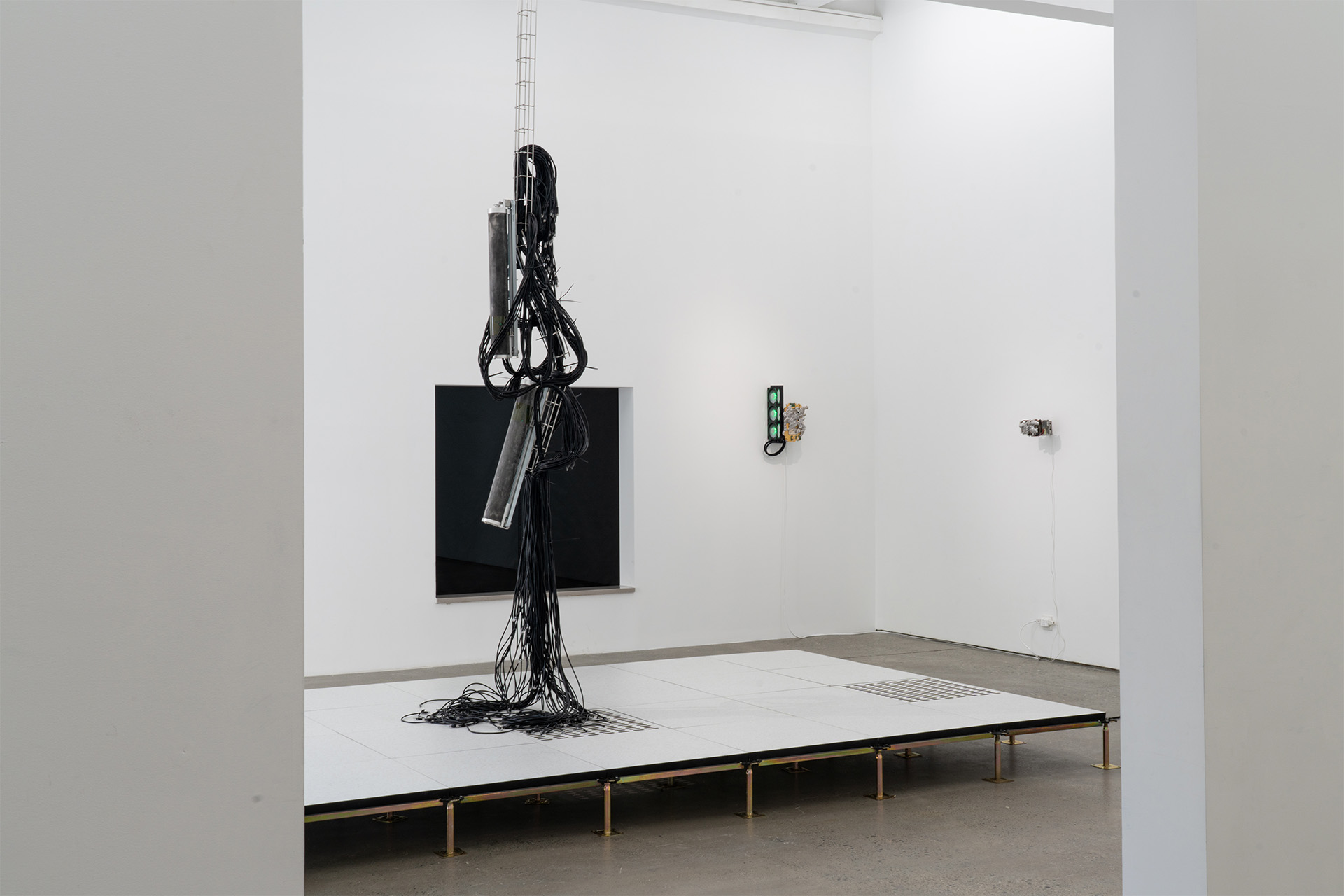
虫,2025,展览现场
Bug, 2025, Exhibition view
虫
郭城
2025.5.1 - 6.21
个展,魔金石空间, 北京
1947年,计算机哈佛马克II在运行过程中出现了一次系统故障,操作员在机器内部发现一只飞蛾卡在继电器之间。这次事件被认为是早期计算机历史中最著名的一只“bug”。生态圈层与技术圈层的这次偶然碰撞,是从20世纪到21世纪多个事件的起点——包括郭城此次名为“虫”的展览。
展厅被分成两个场景:一间异样的数据中心机房,以及一片诡异的田野。两者分处于展厅隔墙的两侧,通过一扇窗户彼此连通, 穿行其间的生物或将经历主体性层面的模糊与错位。
进入机房,两根缓慢旋转的岩芯被数簇随网络桥架一同脱落的网线环绕。绿色薄膜掠过之处,岩芯上显现出仿佛原始汤般的图腾,似细胞,又似斑纹。角落中的服务器里有一台手机挤压着地球玩偶,上面运行的日历软件可持续至系统时间极限(约2920亿年,远超宇宙历史),指涉环境的拟人化与商品化,以及技术基础设施对地质资源的消耗。一旁被融化金属包裹的芯片装置则暗示了技术进程中潜在的毁灭性力量。
穿过“窗户”进入另一场景,发光的帐篷装置源自郭城在墨脱田野灯诱昆虫的经历:关于昆虫夜间被光线吸引的现象,有一种假说认为昆虫利用月光导航,而人造光源则扰乱了它们的导航机制,观众走近这件作品的行为,就像是夜间趋光昆虫的动作。同一区域中的作品可视为一系列的“准物件”(quasi-objects),它们构成了由当代技术设施——公路、发电设备、电缆、冷凝器及其副产物——共同构筑的复杂网络。同时,这些作品亦演练了自然系统强大自我协调机制,无法被掌控,且不断处于动态平衡的状态之中。
“虫(bug)”不仅是技术物中亟待清理或修正的技术缺陷,亦是真实环境中的生物实体。它们常被视为干扰的对象,却揭示了不同圈层交叠之处的复杂生态环境及共生关系。数据中心和田野山川之间的关系实难以用窗户或其他结构搭建明晰隔断。《大戴礼记·易本命》中提及,人为倮虫,并与羽虫、毛虫、麟虫、甲虫并称为五虫,涵盖了世间所有动物。这种分类方式将人类置于更广阔的生命谱系之中,指认了万物的复杂纠缠。
部分作品由北京大学博古睿研究中心“创意未来”项目委任(首展于《时间的幼虫》,龙星如策划)。
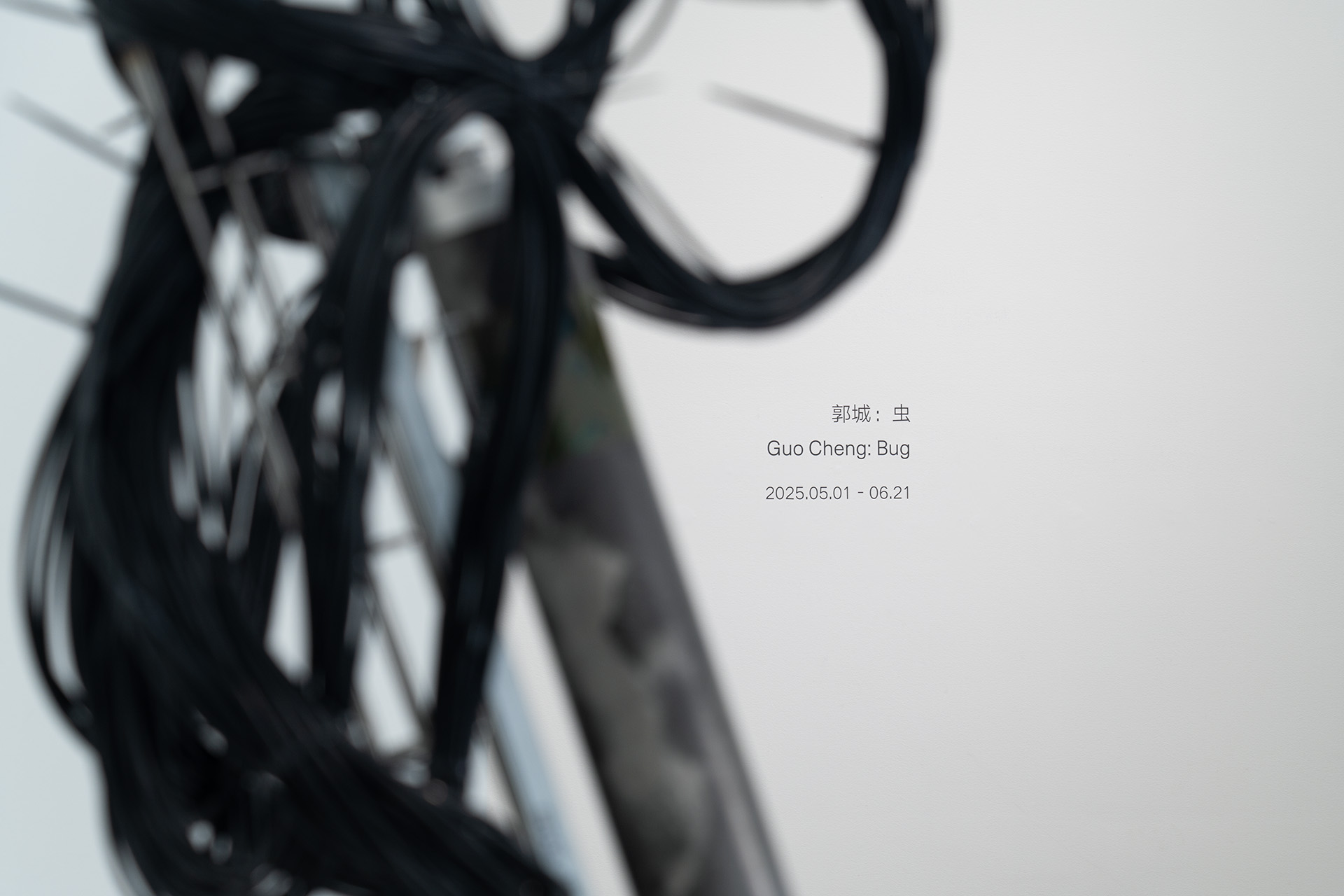
虫,2025,展览现场
Bug, 2025, Exhibition view
Bug
GUO Cheng
1 May - 21 June 2025
Solo Show, Magician Space, Beijing
In 1947, operators discovered a moth trapped between the relays of the Harvard Mark II computer during a system malfunction. This incident is remembered as the most famous "bug" in early computing history. This accidental collision between ecological and technological realms marks the beginning of a series of events from the 20th to the 21st century, including Guo Cheng's exhibition titled "Bug."
The exhibition space is divided into two distinct yet interconnected scenarios: an uncanny data center and a peculiar outdoor field. Separated by a partition wall yet linked by a window, creatures passing between these two spaces may experience a blurring and dislocation of subjectivity.
Entering the data center, two slowly rotating rock cores are wrapped in clusters of network cables cascading from overhead cable trays. As a green film sweeps across their surfaces, the rock cores reveal primordial soup-like totems resembling cellular structures or organic markings. In the corner, a server hosts a smartphone pressing against an Earth-shaped fabric toy, running a calendar app programmed to last until the system's temporal limit—approximately 292 billion years, significantly exceeding the known age of the universe. This piece alludes to the anthropomorphization and commodification of the environment, highlighting the technological infrastructure's consumption of geological resources. Nearby, chips encased in molten metal hint at the destructive potential inherent in technological advancement.
Passing through the "window" into the second scenario, viewers encounter a luminous tent installation inspired by Guo Cheng's experiences of attracting insects with artificial lights during field research in Motuo. One hypothesis about nocturnal insects being drawn to light is that they use moonlight to navigate, and artificial illumination disrupts this mechanism. Visitors approaching the installation mimic the insects' phototactic behavior. Works within this same area can be seen as "quasi-objects," forming a complex network composed of contemporary technological infrastructures—roads, power generators, cables, condensers, and their byproducts. Simultaneously, these pieces demonstrate nature's resilient mechanisms of self-regulation, which remain uncontrollable and constantly in dynamic equilibrium.
The "bug" thus transcends its definition as merely a technical flaw awaiting rectification; it also represents a living entity within actual ecosystems. Often viewed as disturbances, bugs expose the intricate ecological interactions and symbiotic relationships at the intersections of distinct realms. The relationship between data centers and natural landscapes is not easily delineated by structures such as windows. As described in the ancient Chinese text *Da Dai Li Ji* (*The Book of Rites,* compiled *by Dai De*), humans are categorized as "naked insects," together with the winged, the furred, the scaled, and the armored varieties of insects—a classification that encompasses all living creatures. This perspective situates humanity within a broader and deeply entangled spectrum of life.
Part of the works was commissioned by the "Creative Future" project of The Berggruen Research Center, Peking University(first exhibited inThe Larva of Time,curated by Iris Long)
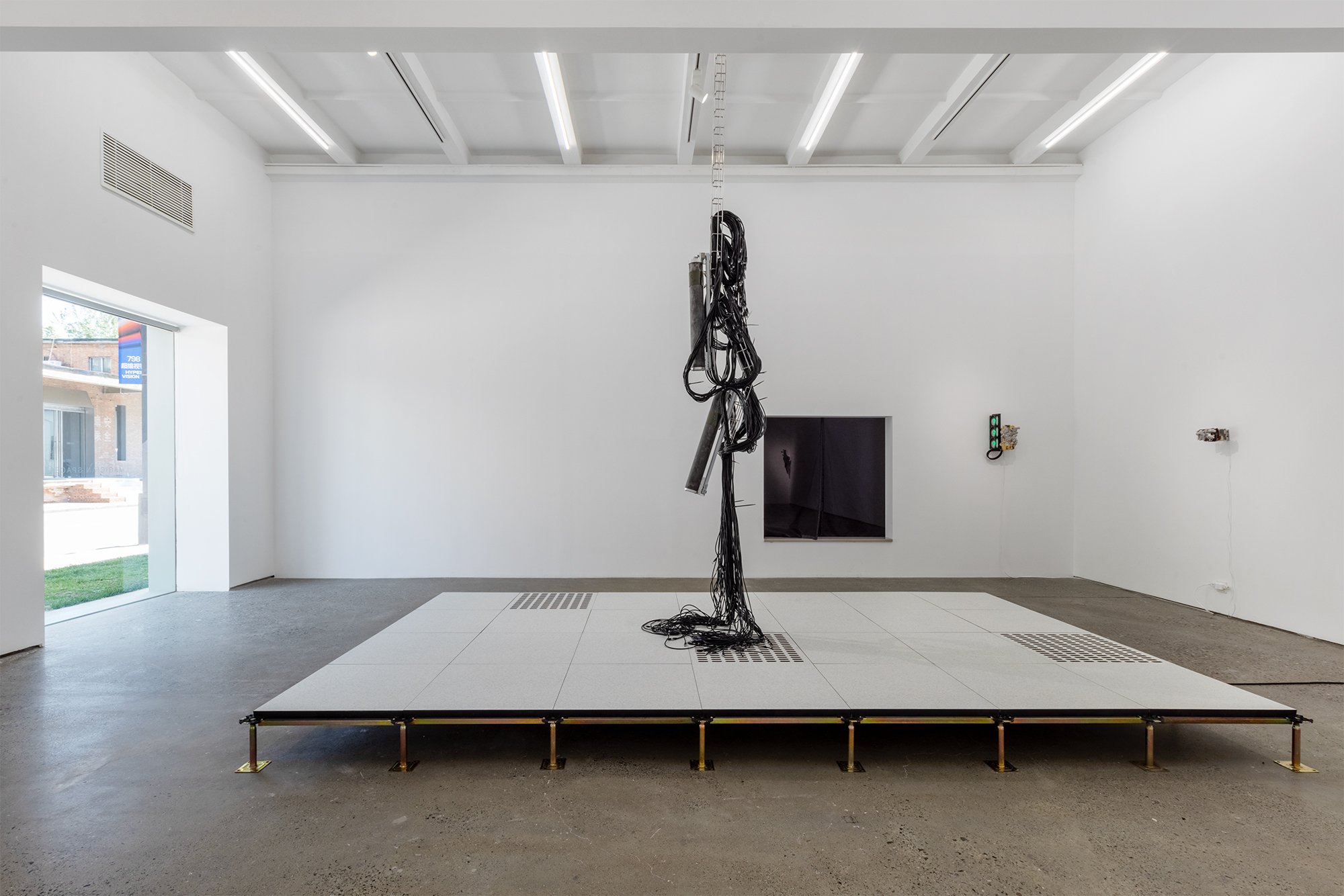
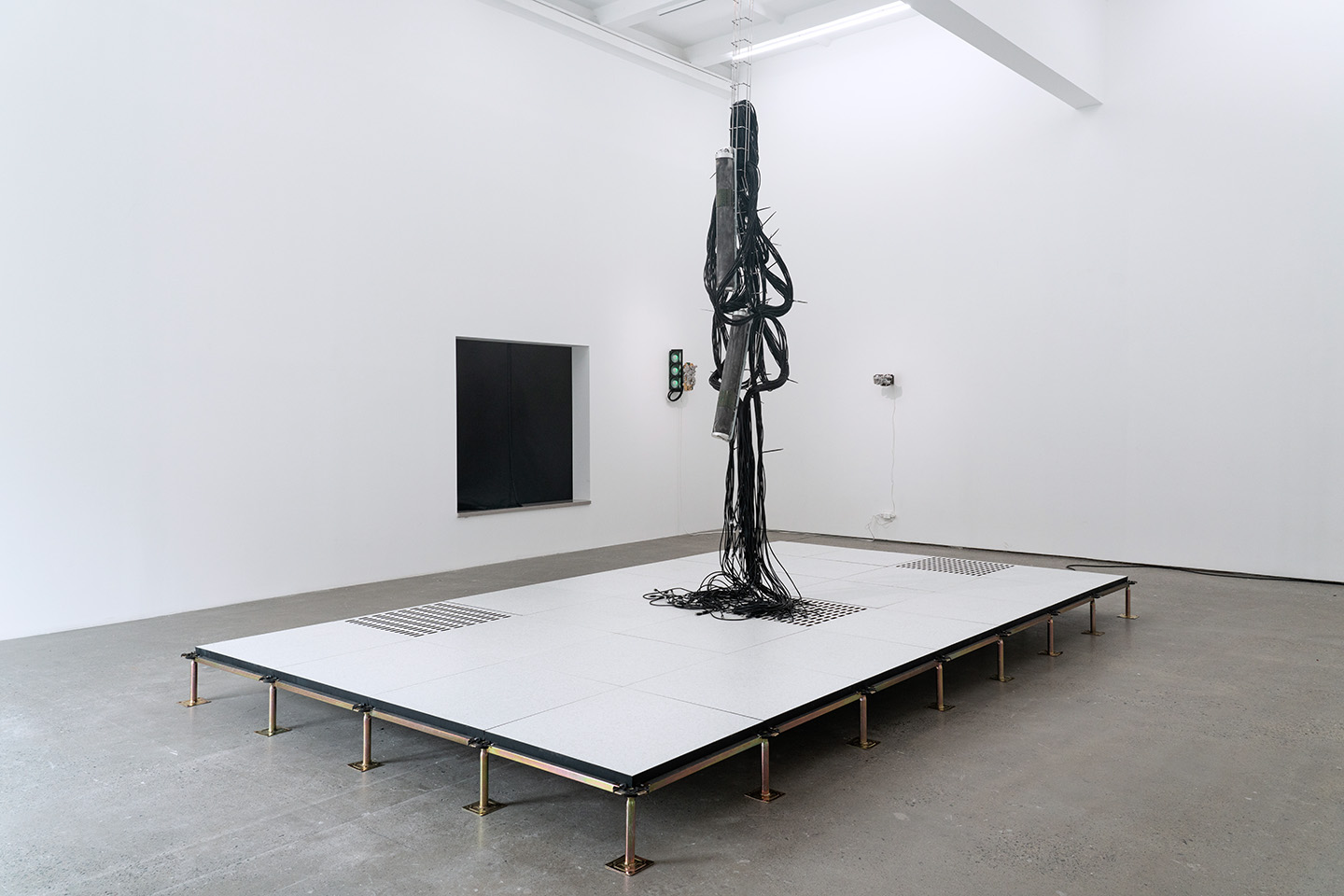
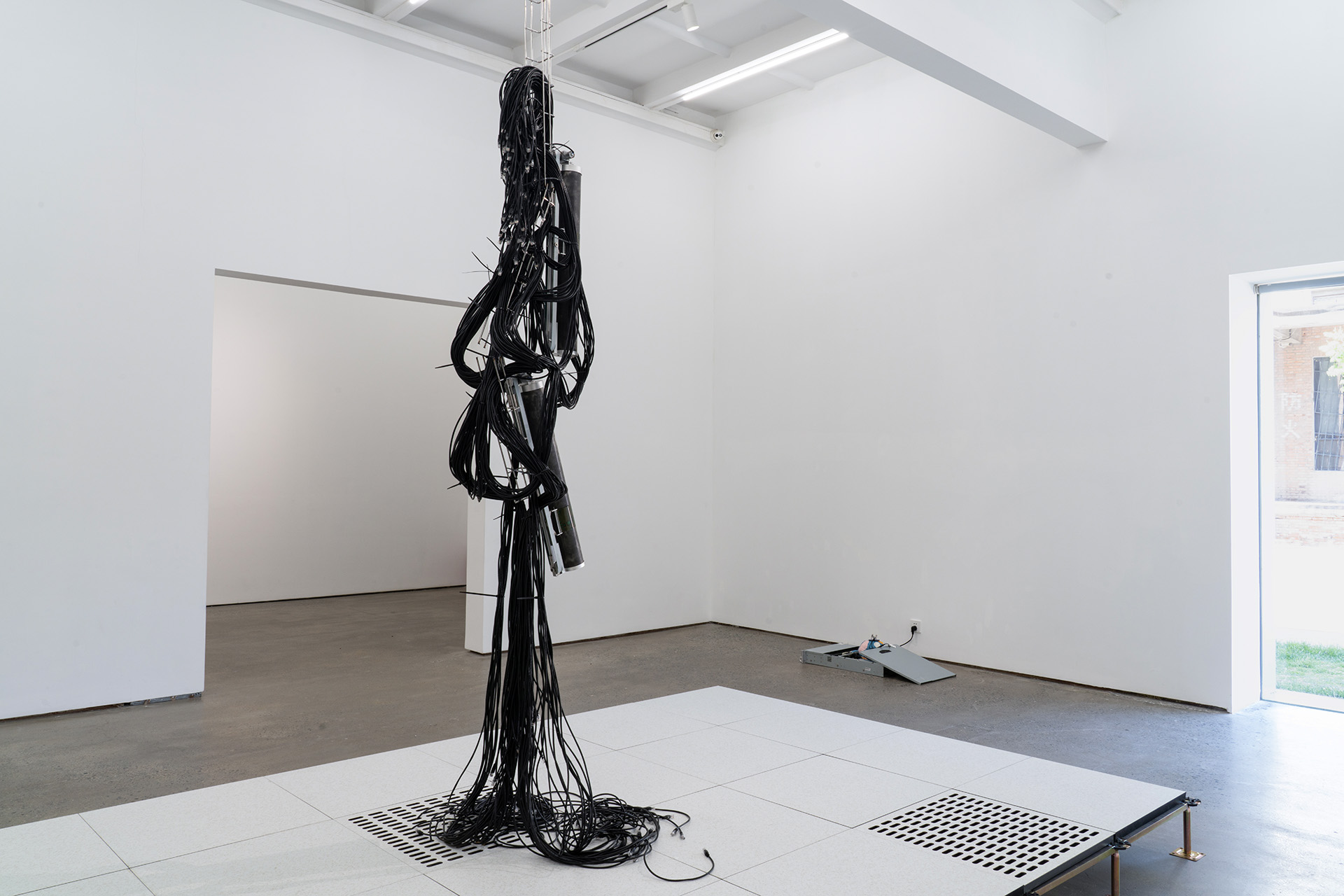
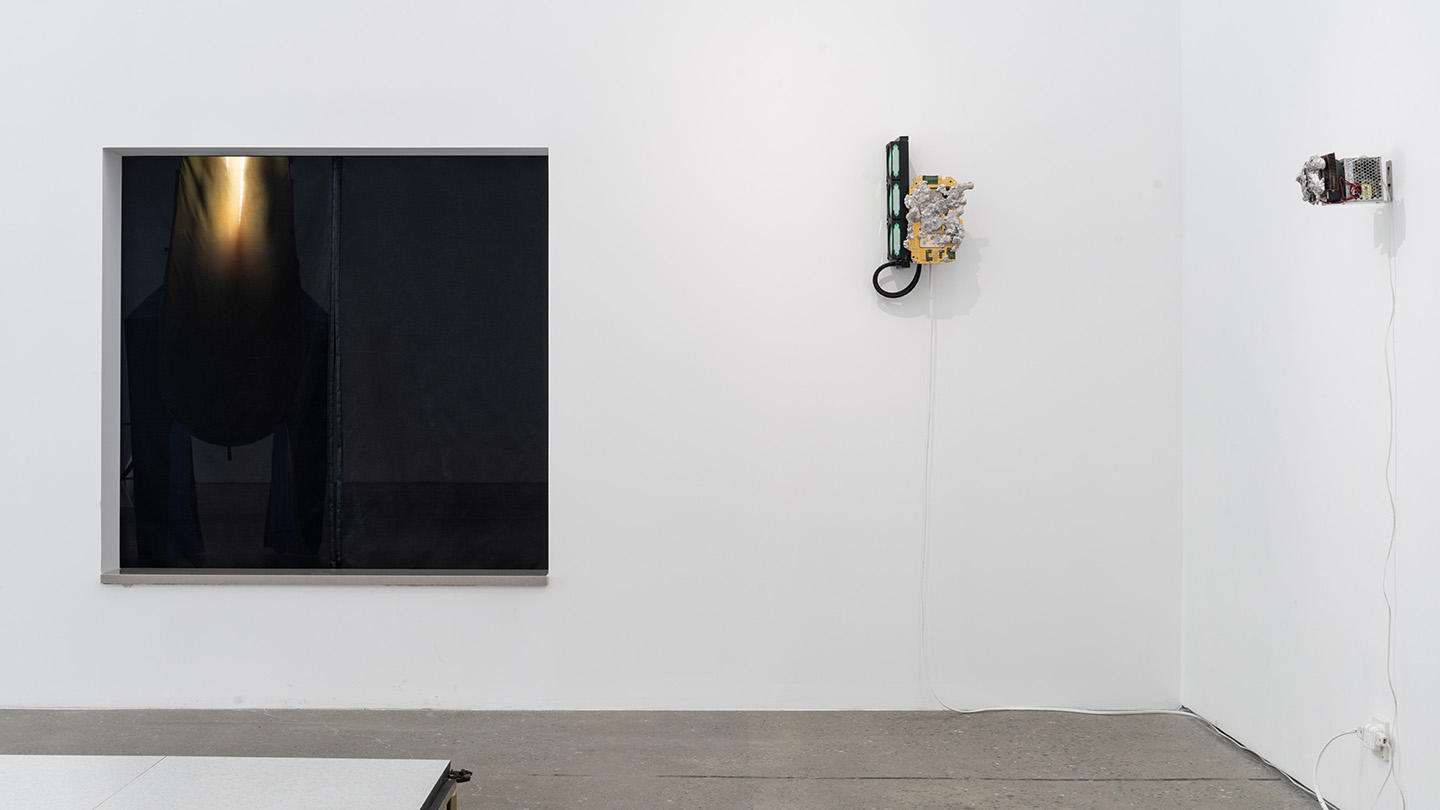
虫,2025,展览现场
Bug, 2025, Exhibition view
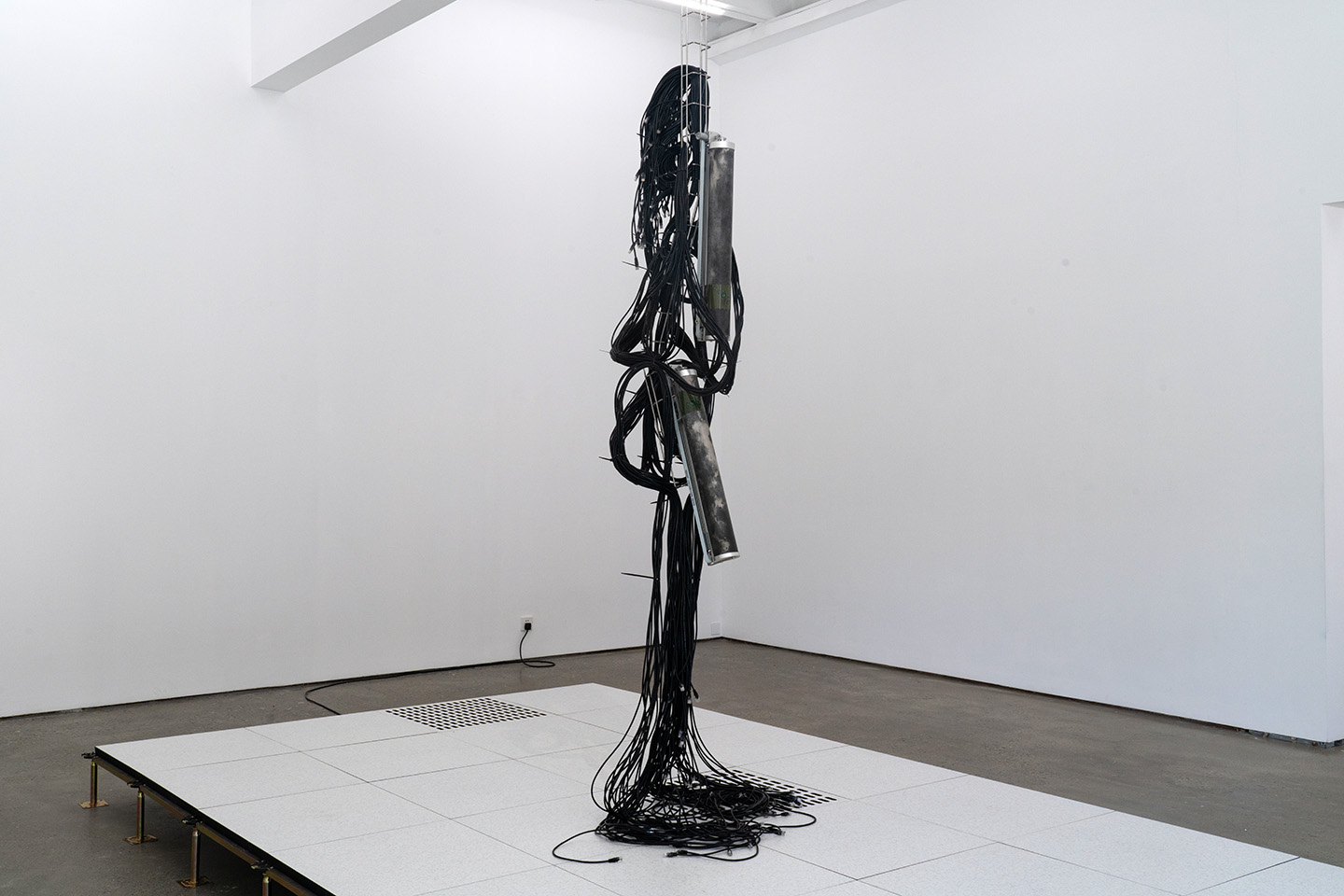
石蛹No.2, 2025, 树脂、电机、网线桥架、网线、铝、不锈钢、防静电地板,混合材料
Pupa Stone No.2, 2025, Resin, motors, cable trays, network cables, aluminum, stainless steel, anti-static flooring, mixed media
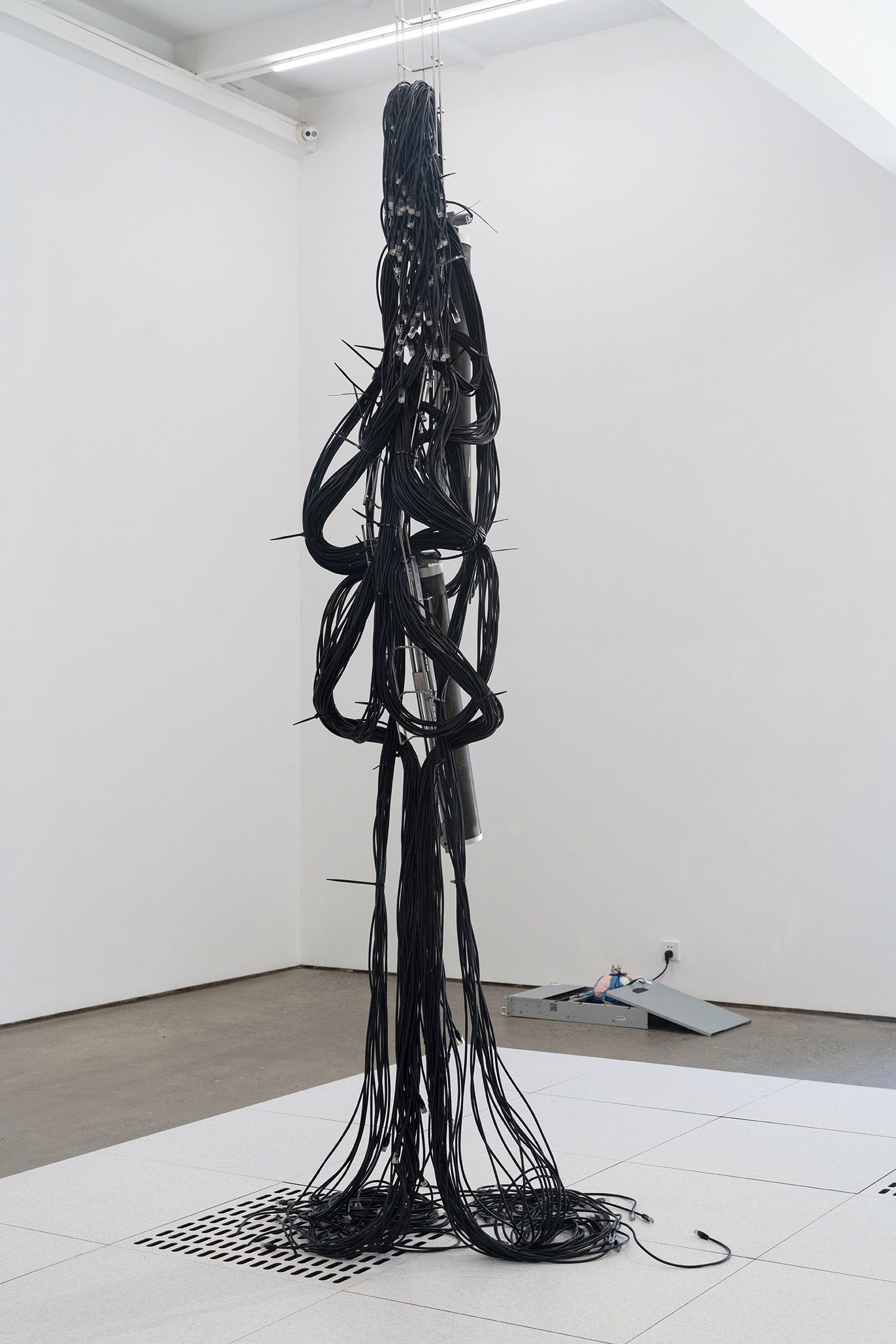
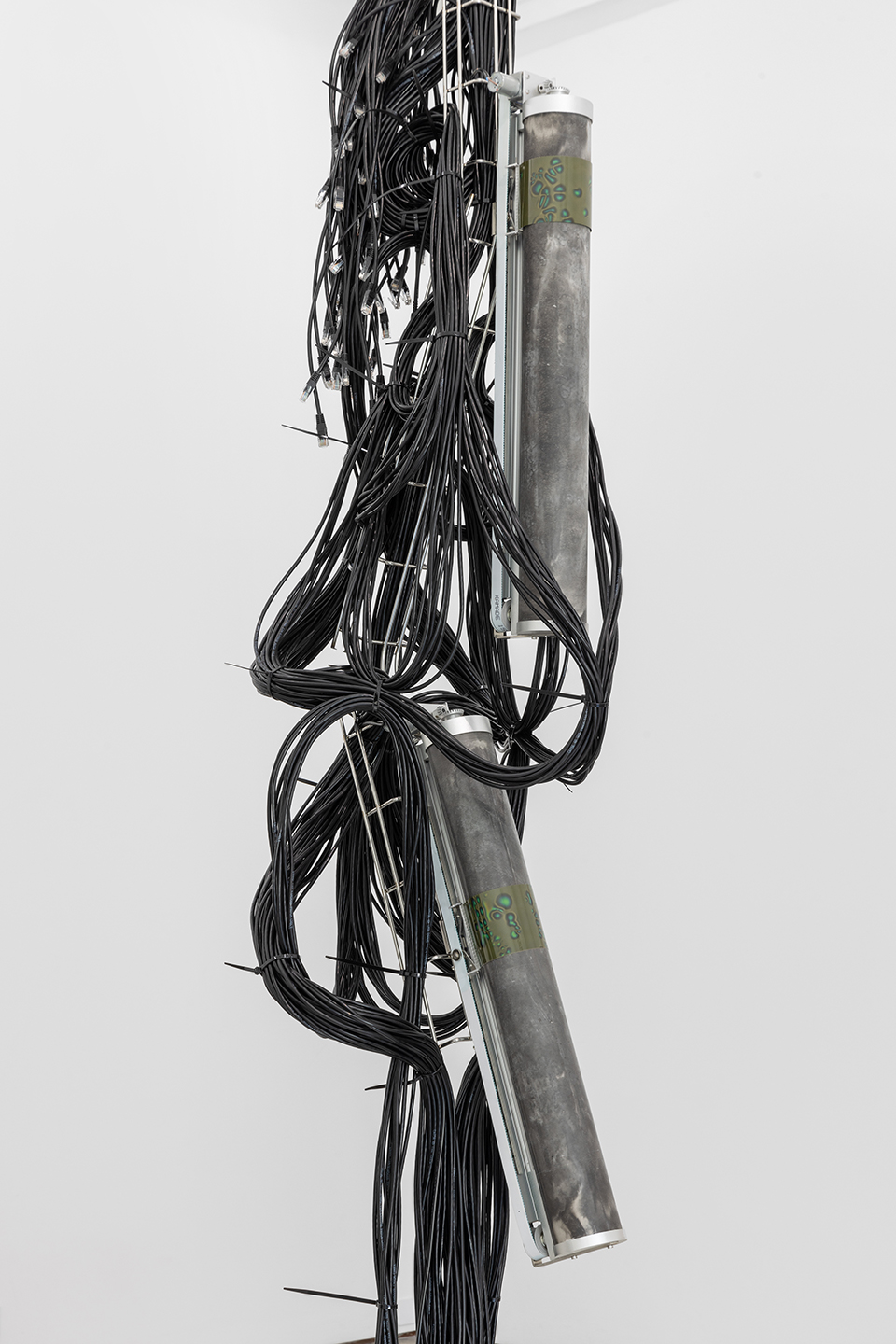
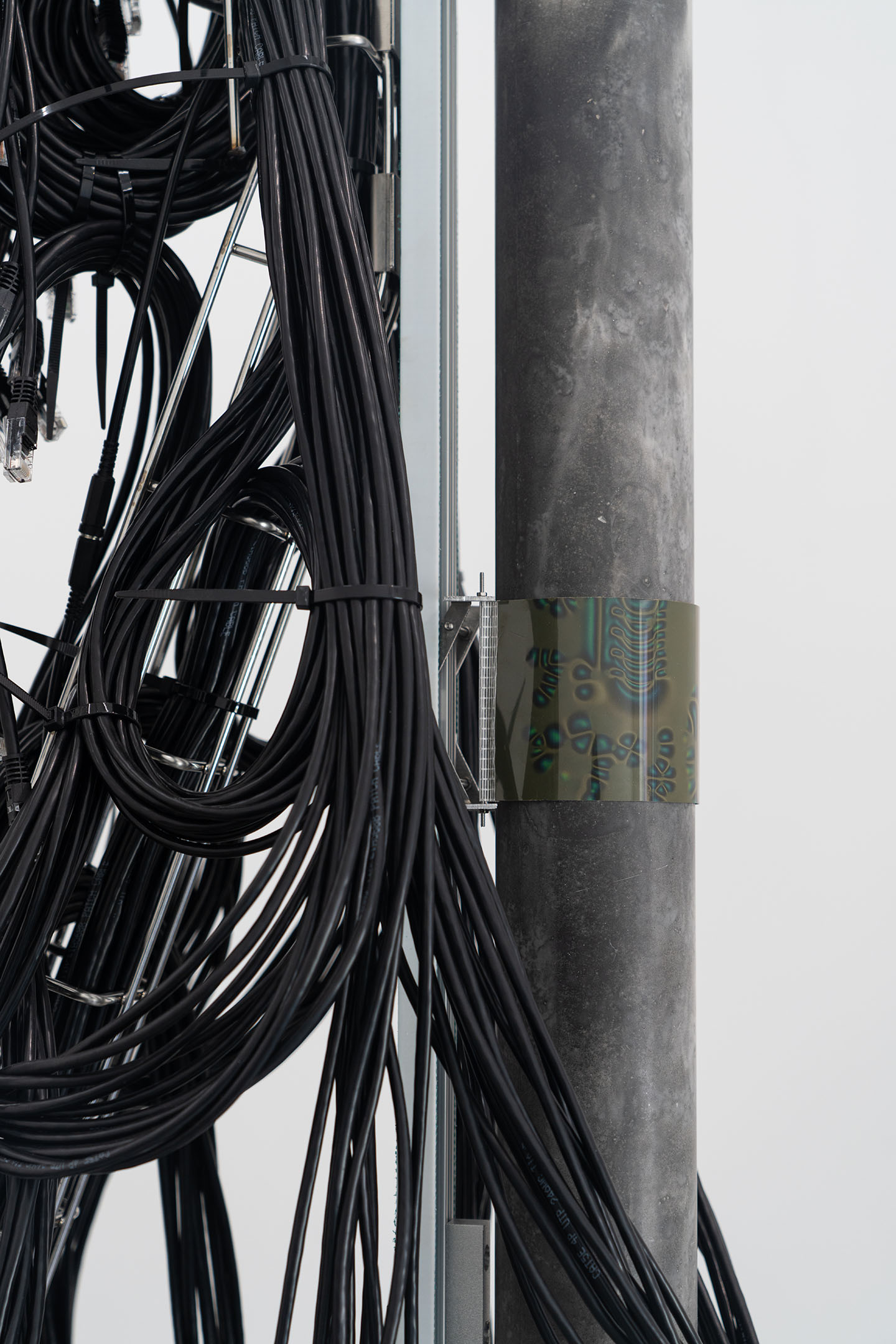
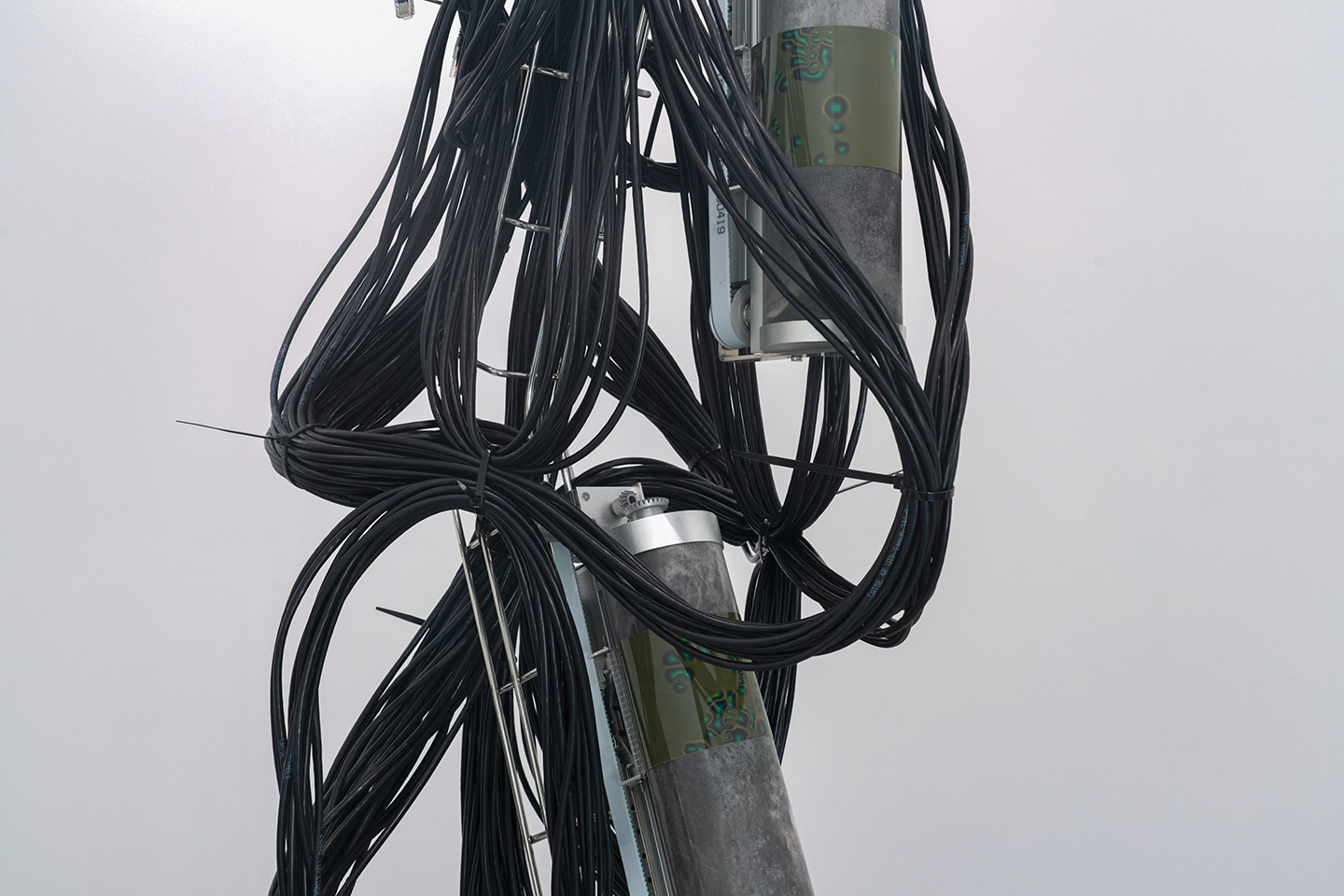
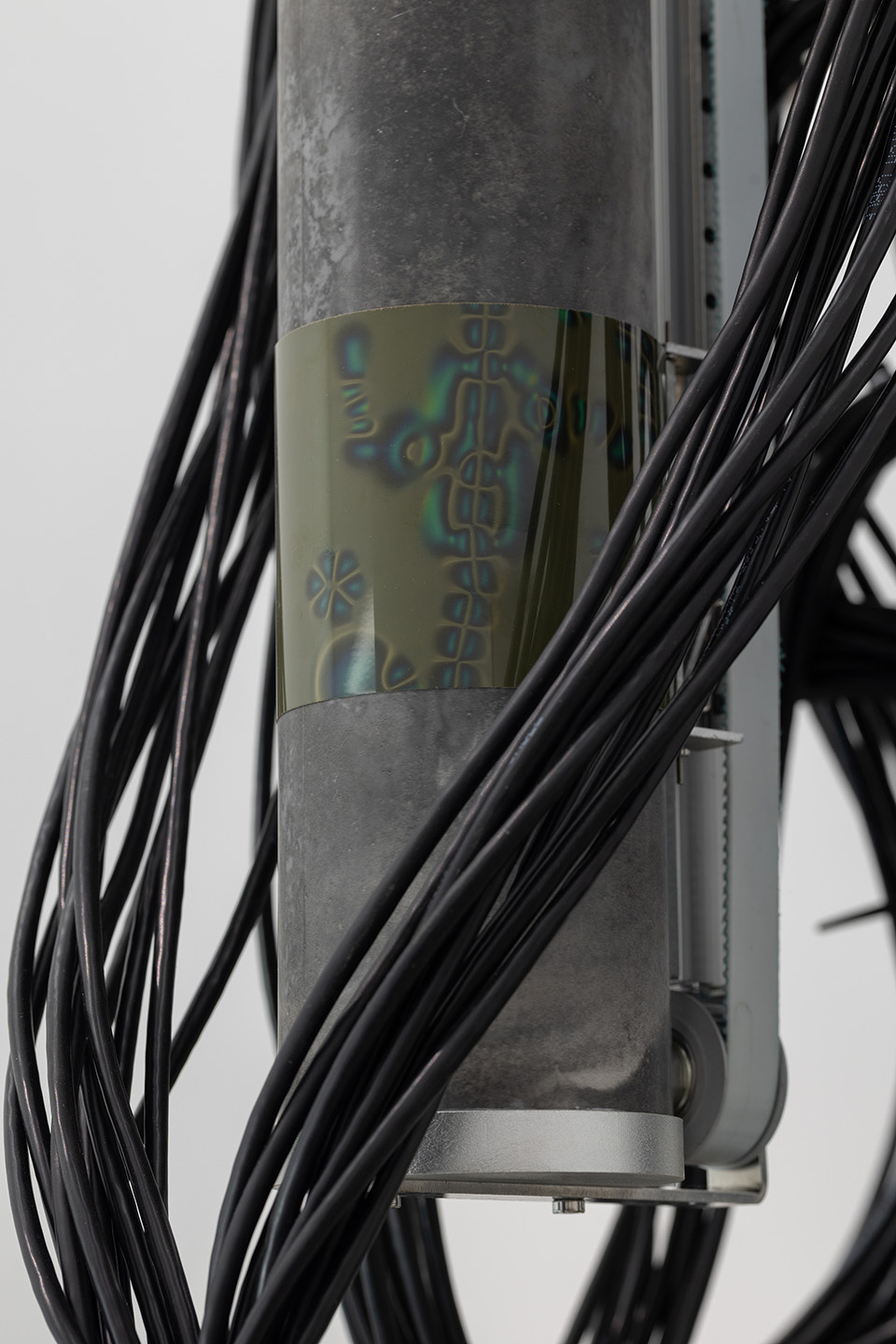
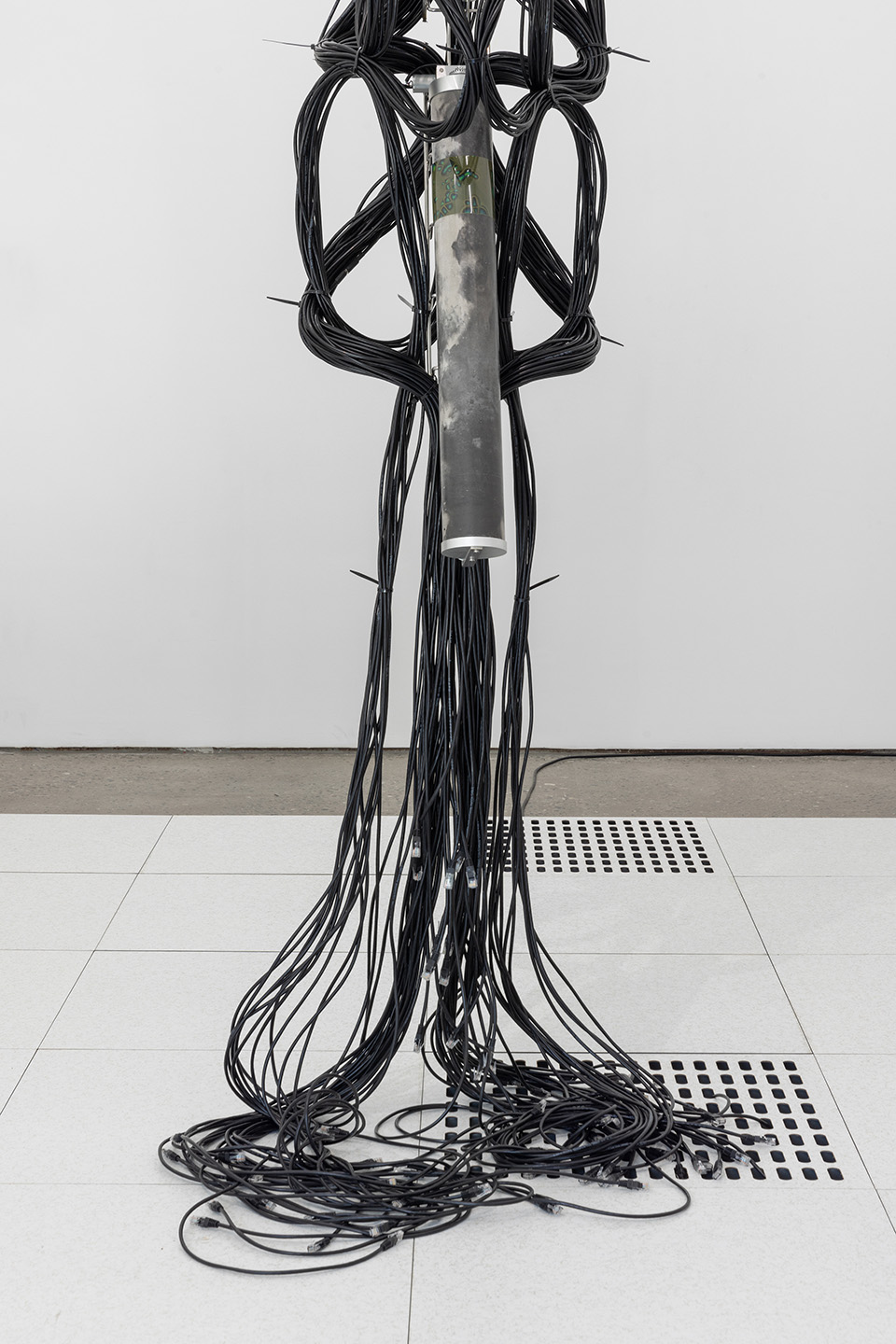
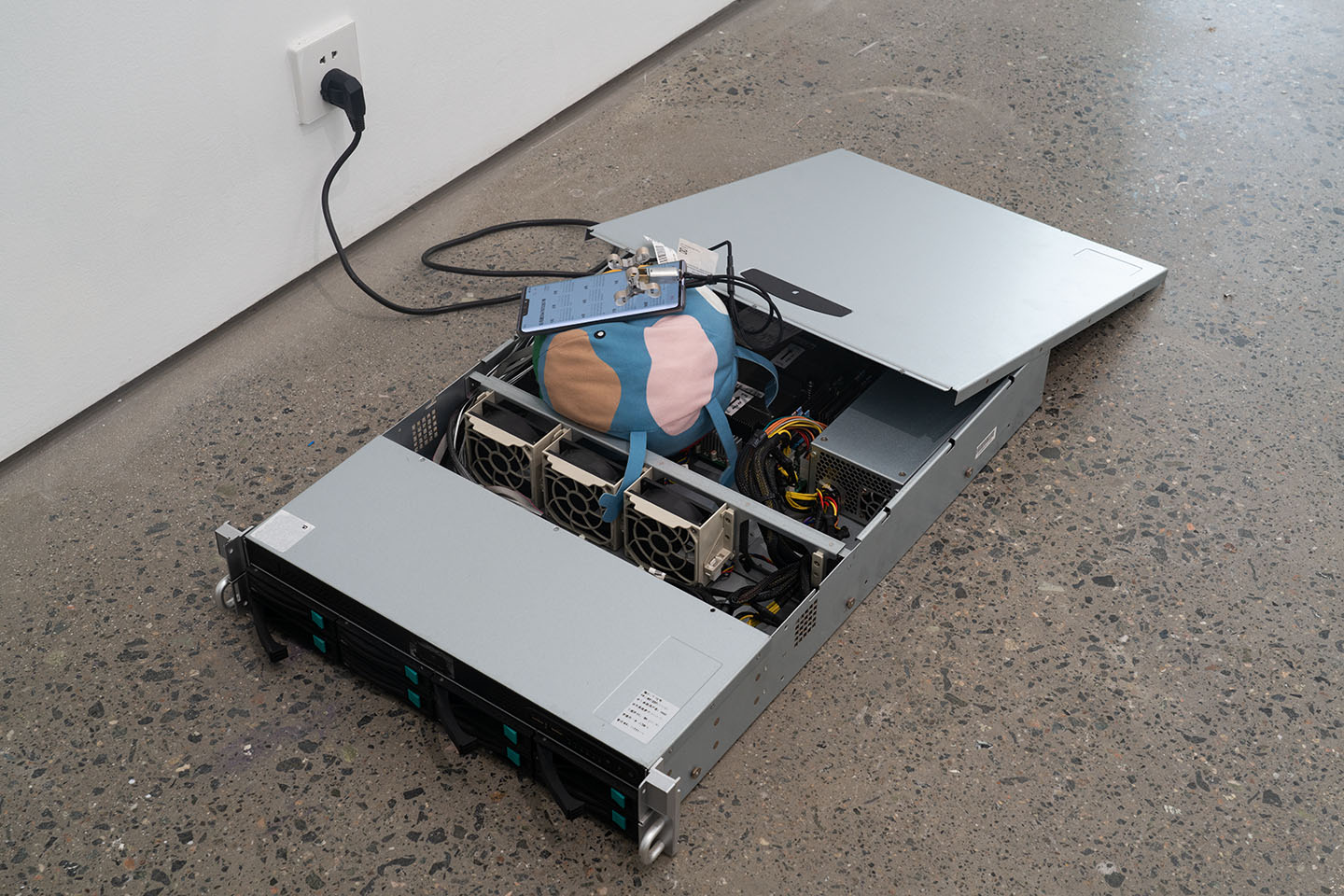
Y292B Bug,2025,定制软件、手机、服务器主机、地球玩偶、定制刷屏器
Y292B Bug, 2025, Custom software, smartphone, server, earth doll, custom screen swiper
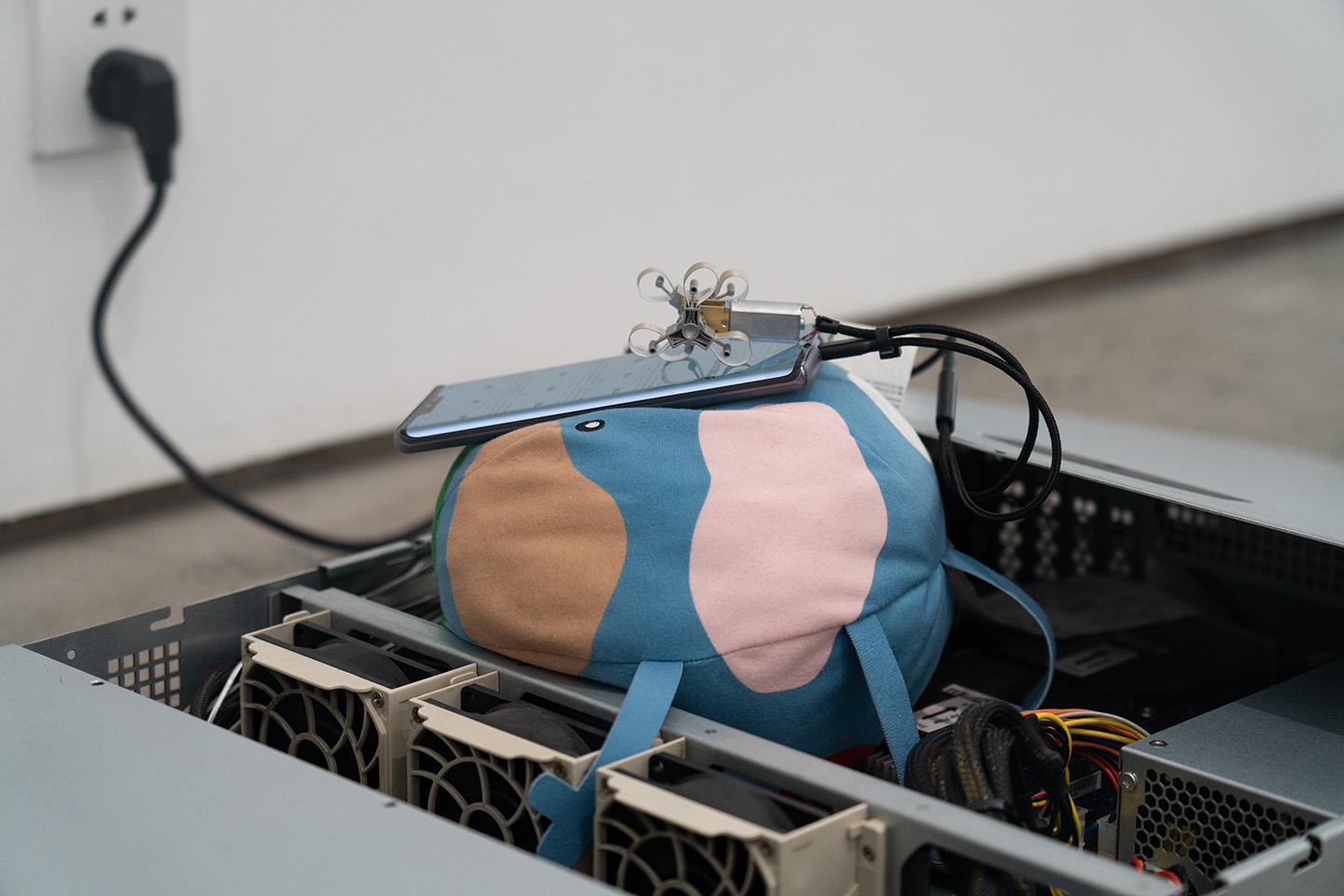
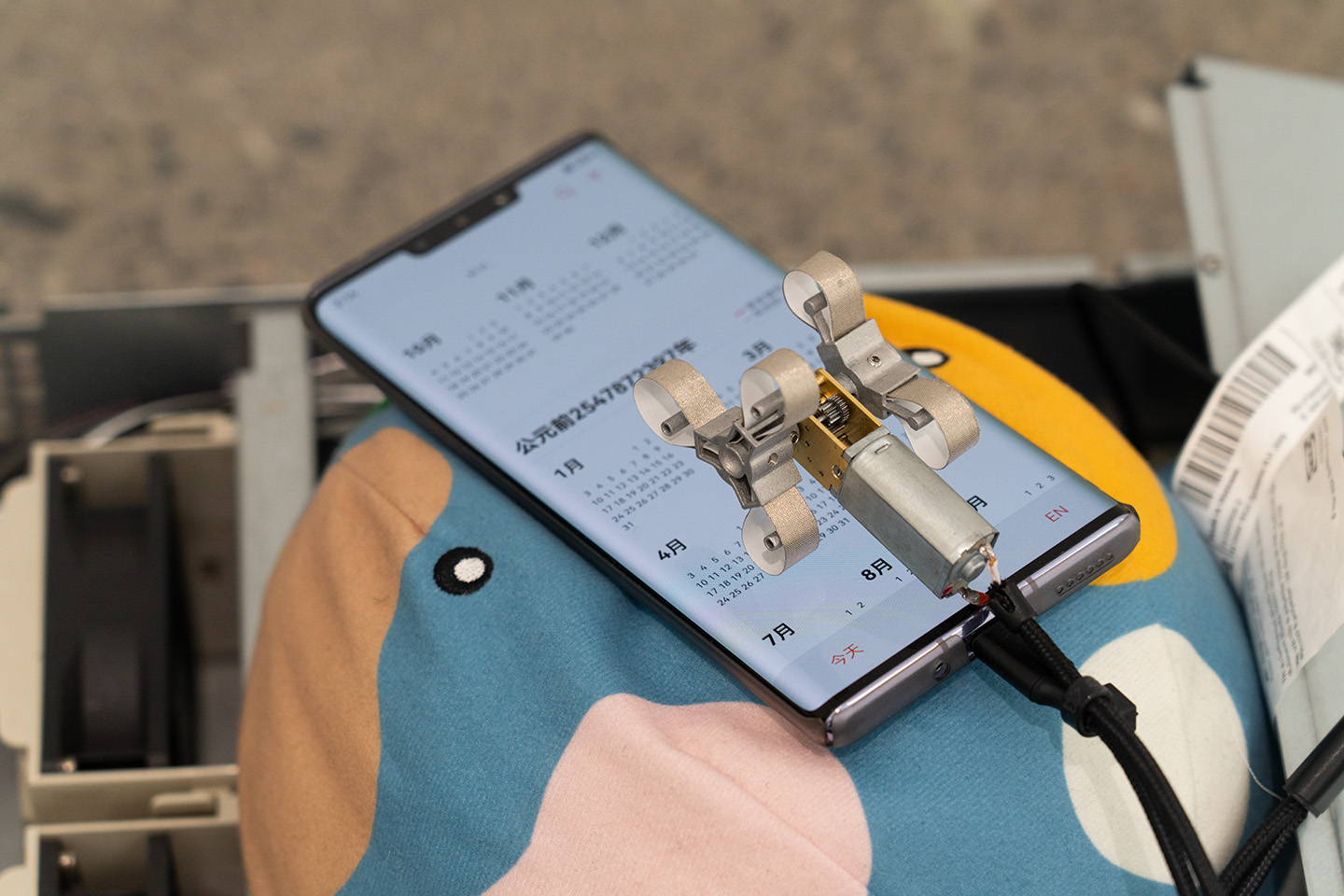
Y292B Bug, Installation video documentation
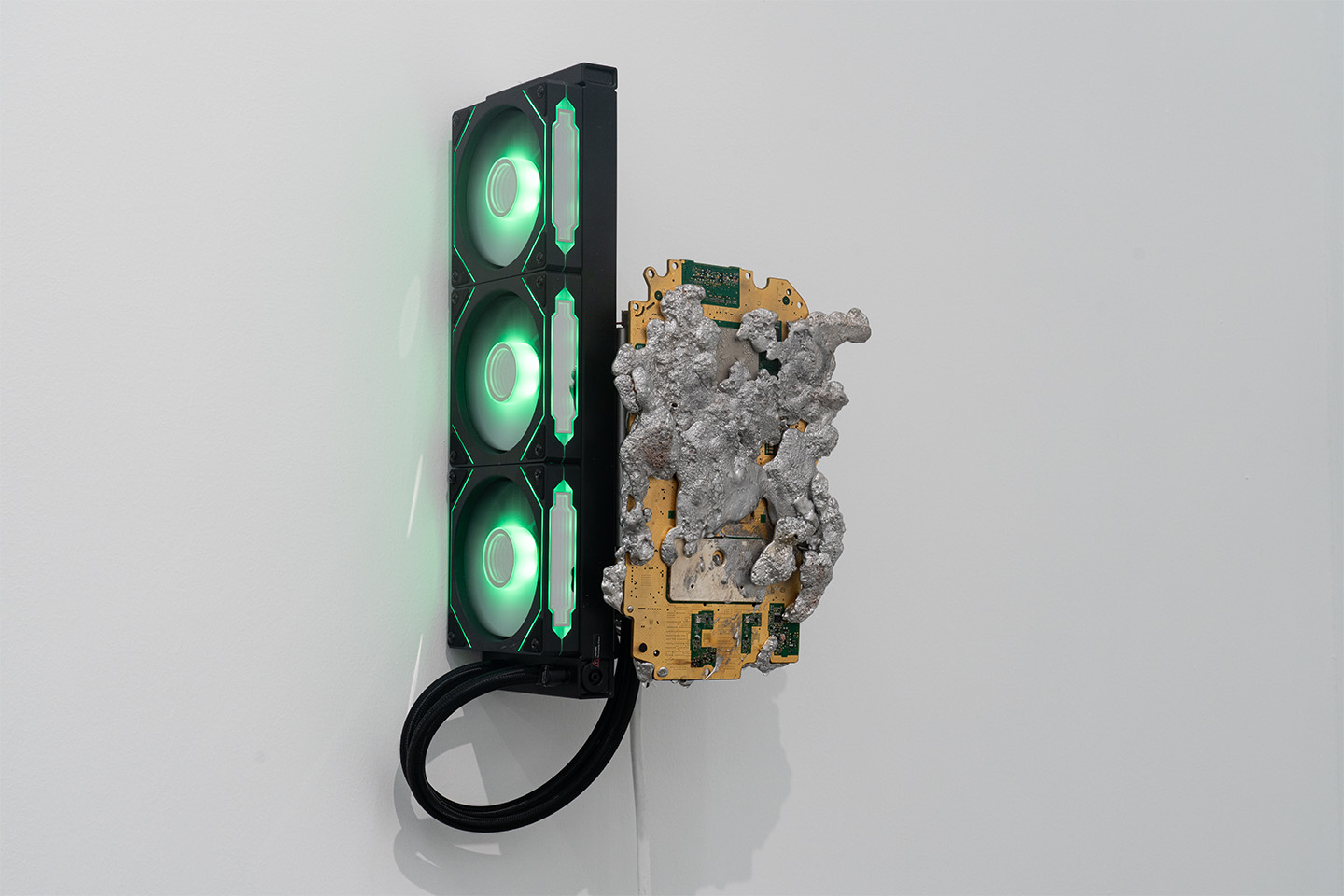
雾取 6216,2025,锡、电路板、定制电路、液冷散热器、不锈钢
Fog Basker 6216, 2025, Tin, PCB, custom hardware, liquid cooler, stainless steel
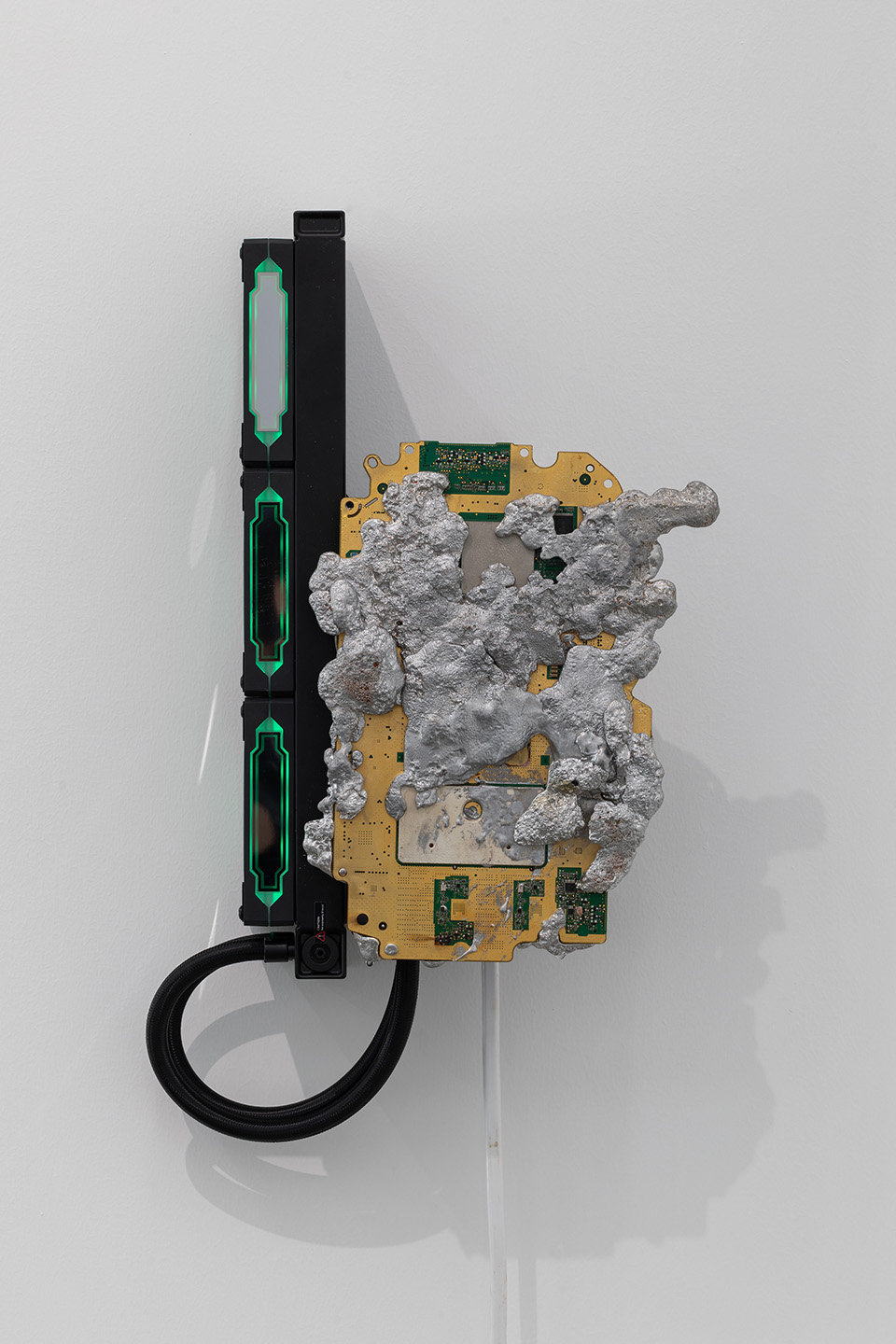
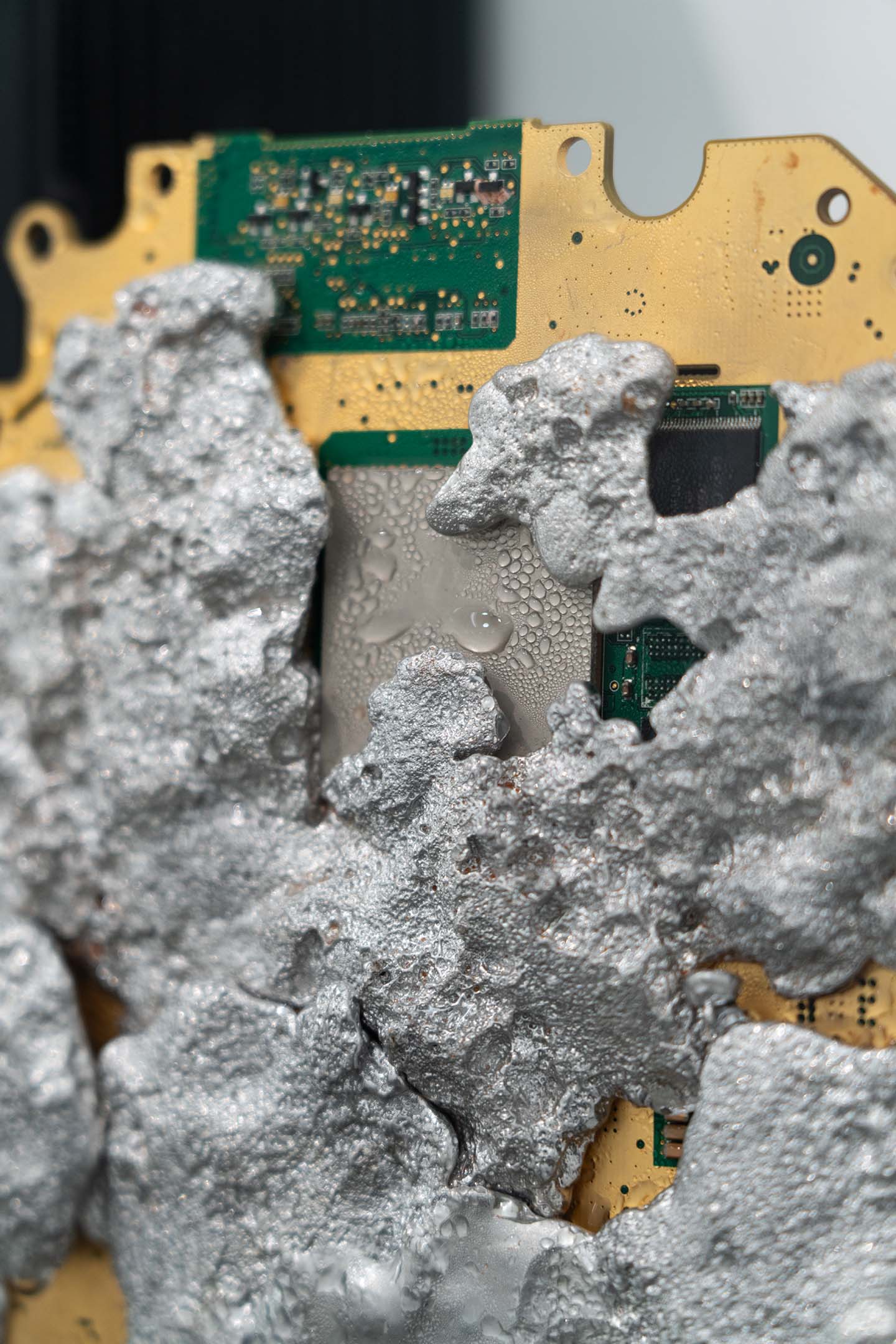
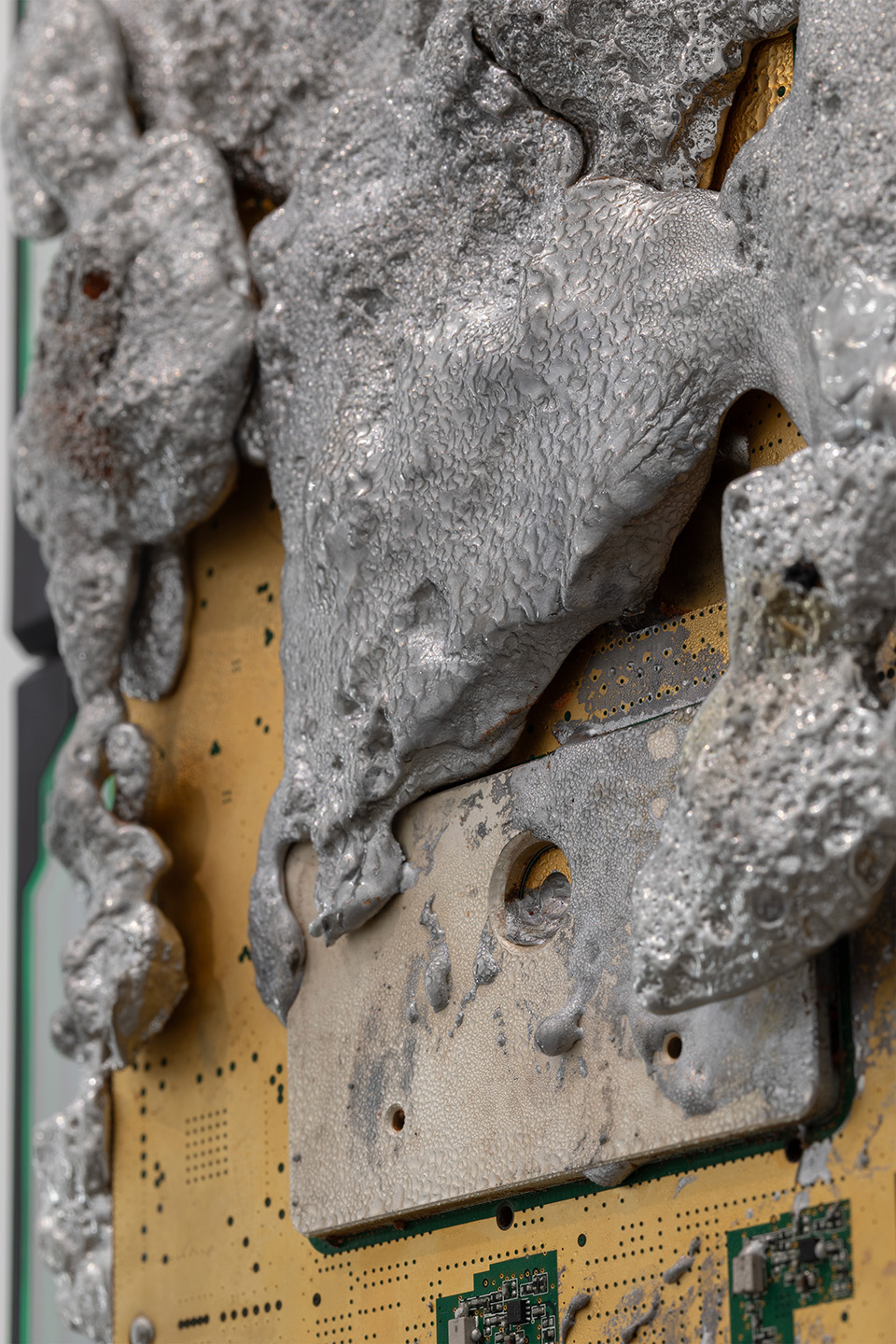
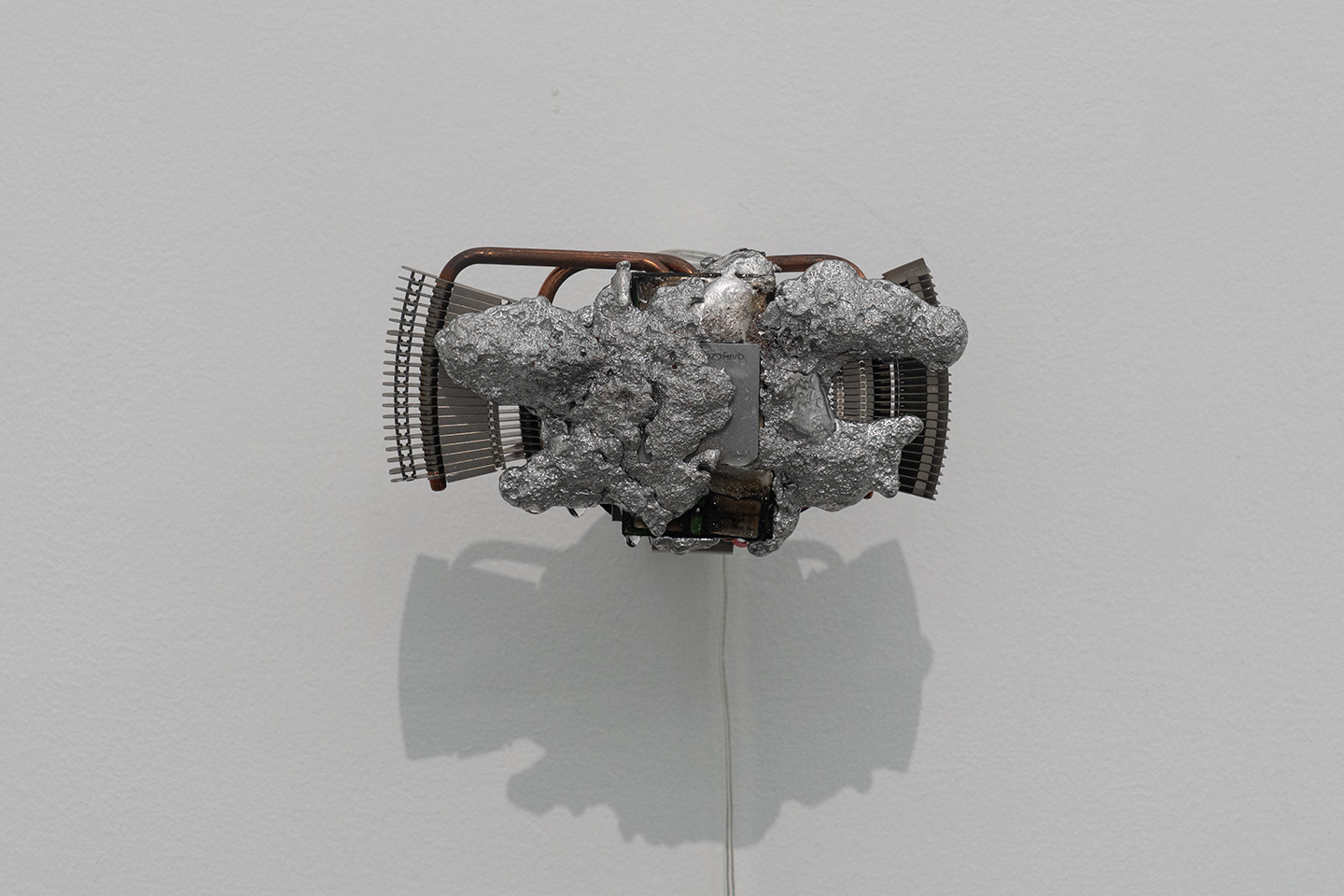
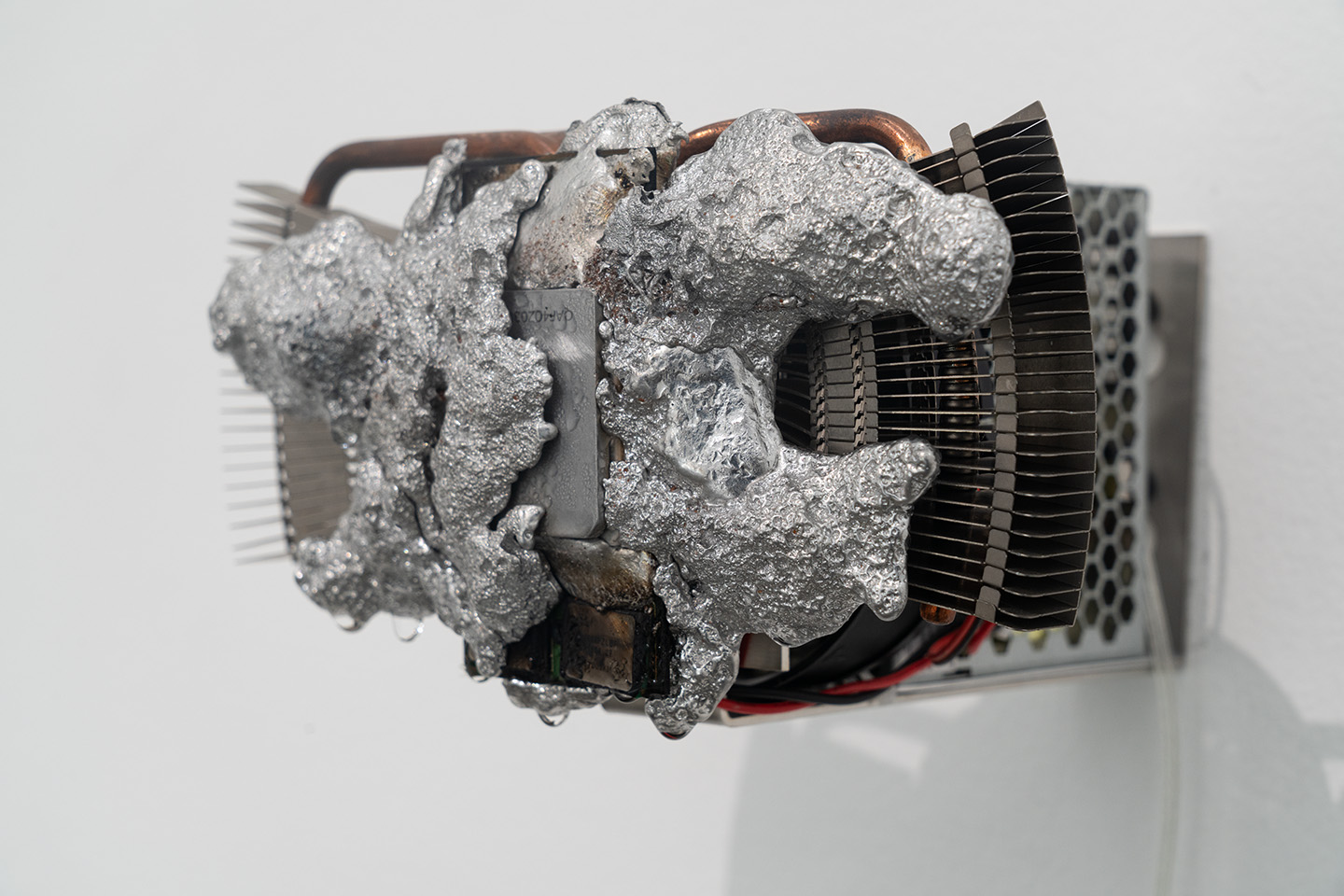
雾取 1554,2025,锡、芯片、定制电路、散热片、风扇、不锈钢
Fog Basker 1554, 2025, Tin, chip, custom hardware, heatsink, fan, stainless steel
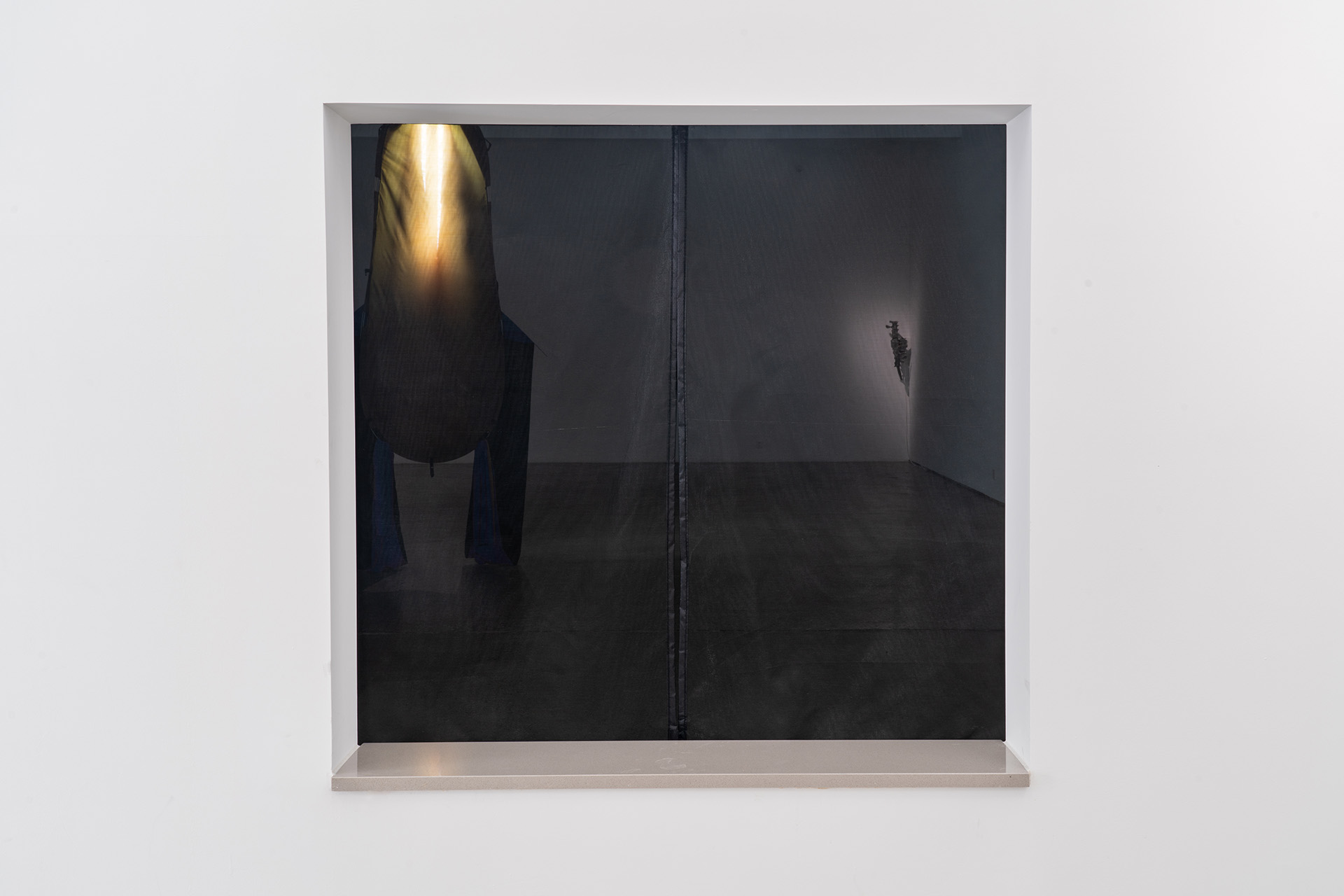
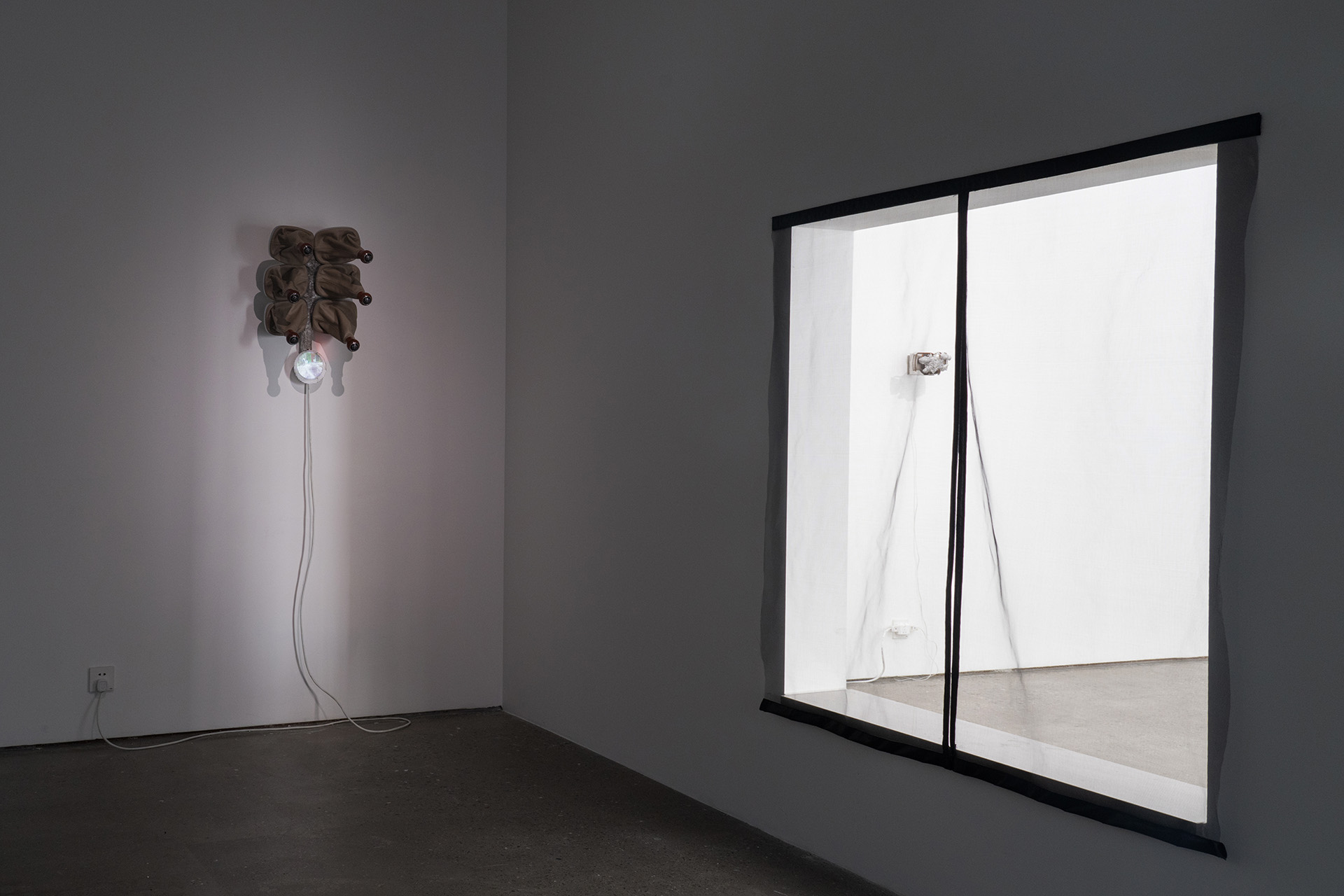
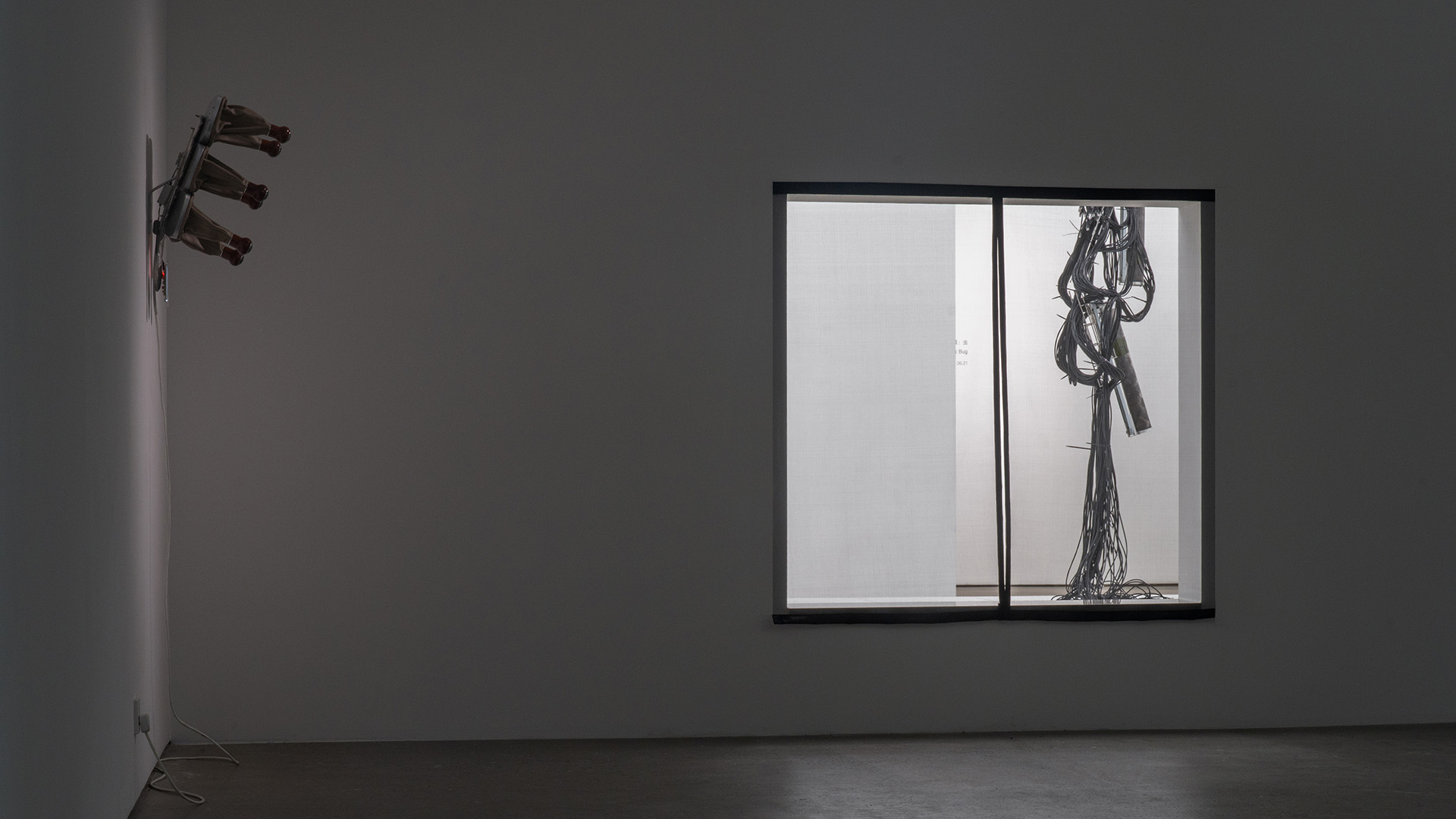
虫,2025,展览现场
Bug, 2025, Exhibition view
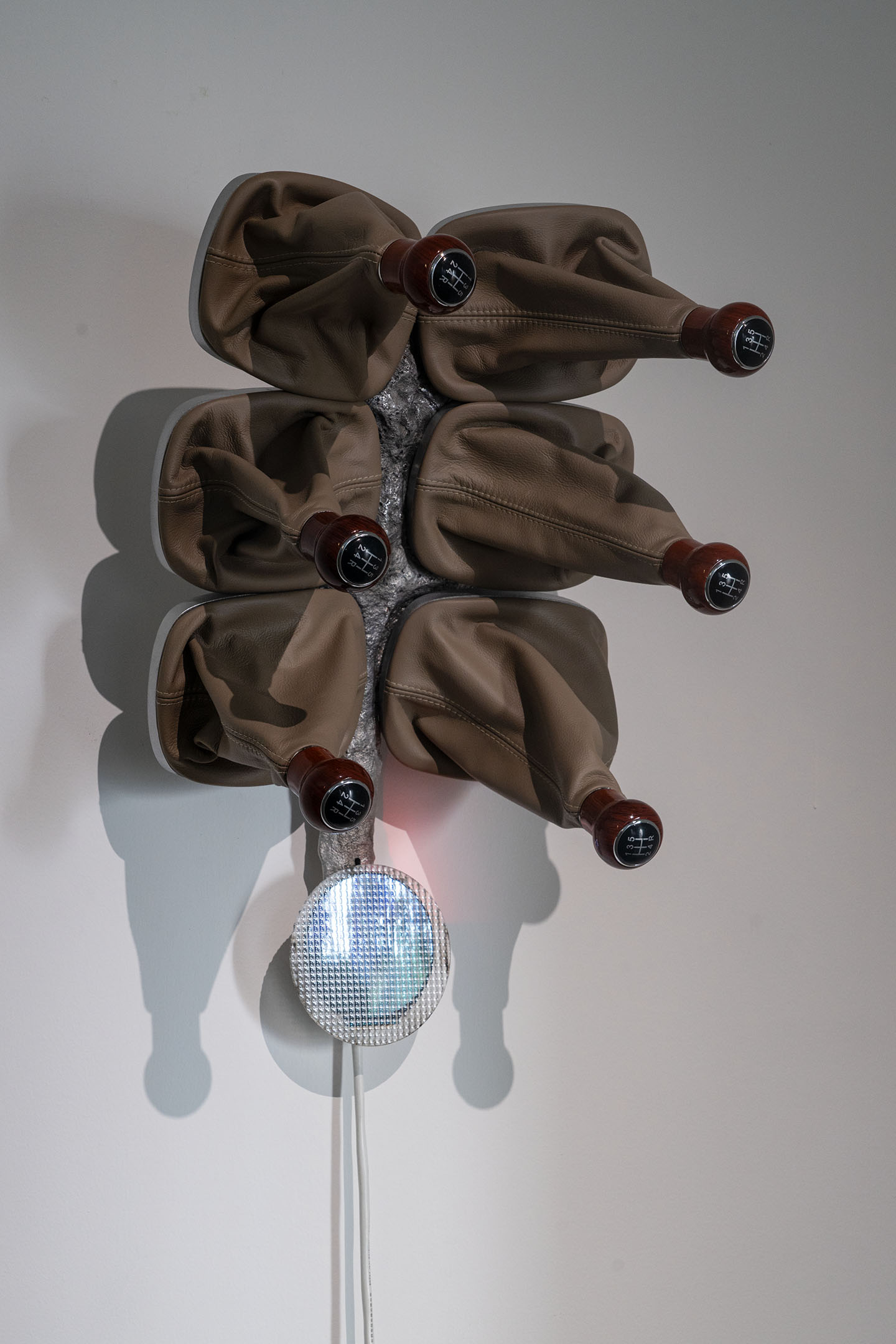
占位者 No.1,2024,变速杆、铝、LCD 屏幕
Niche Squatter No.1, 2024, Gear shift, aluminum, LCD screen
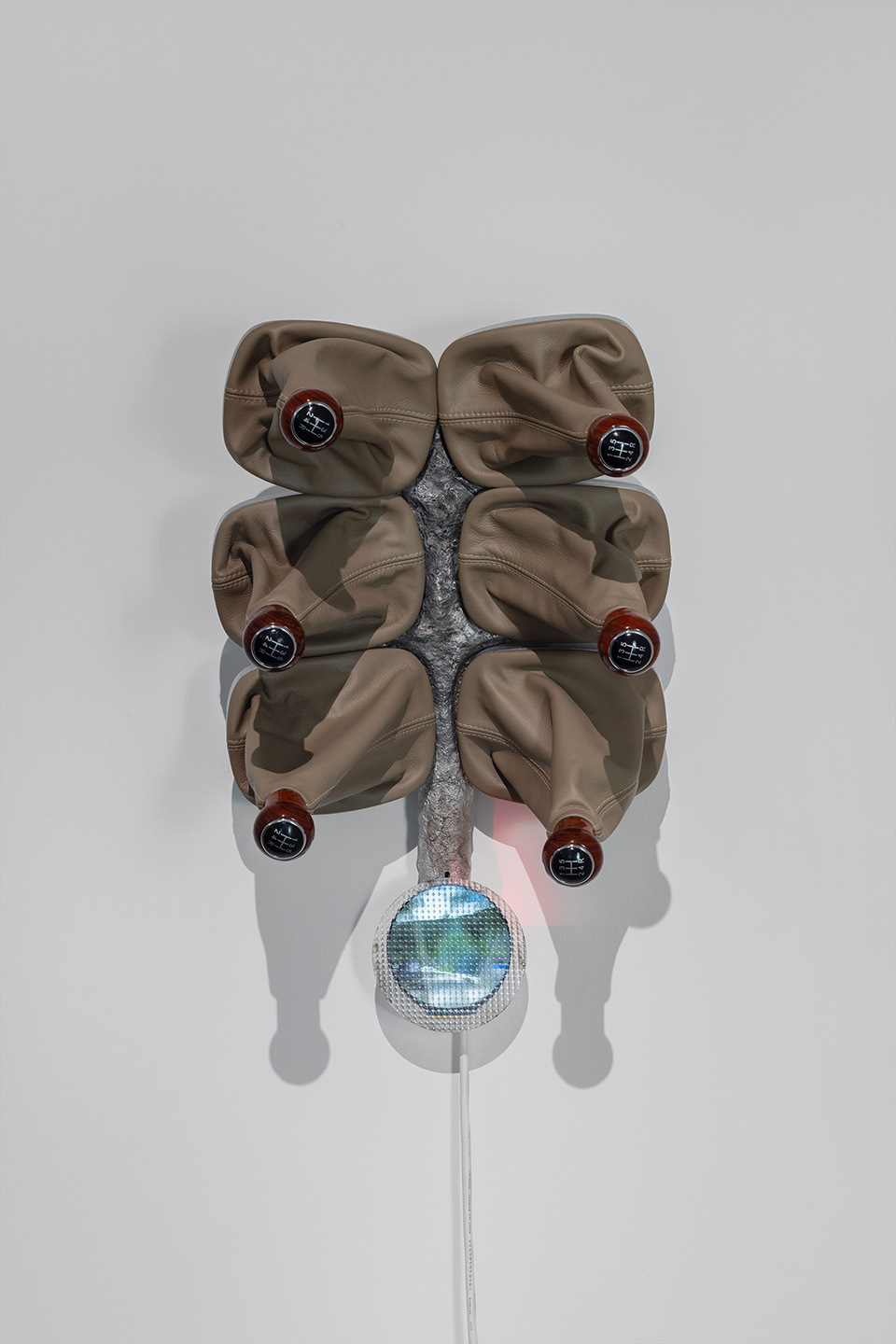
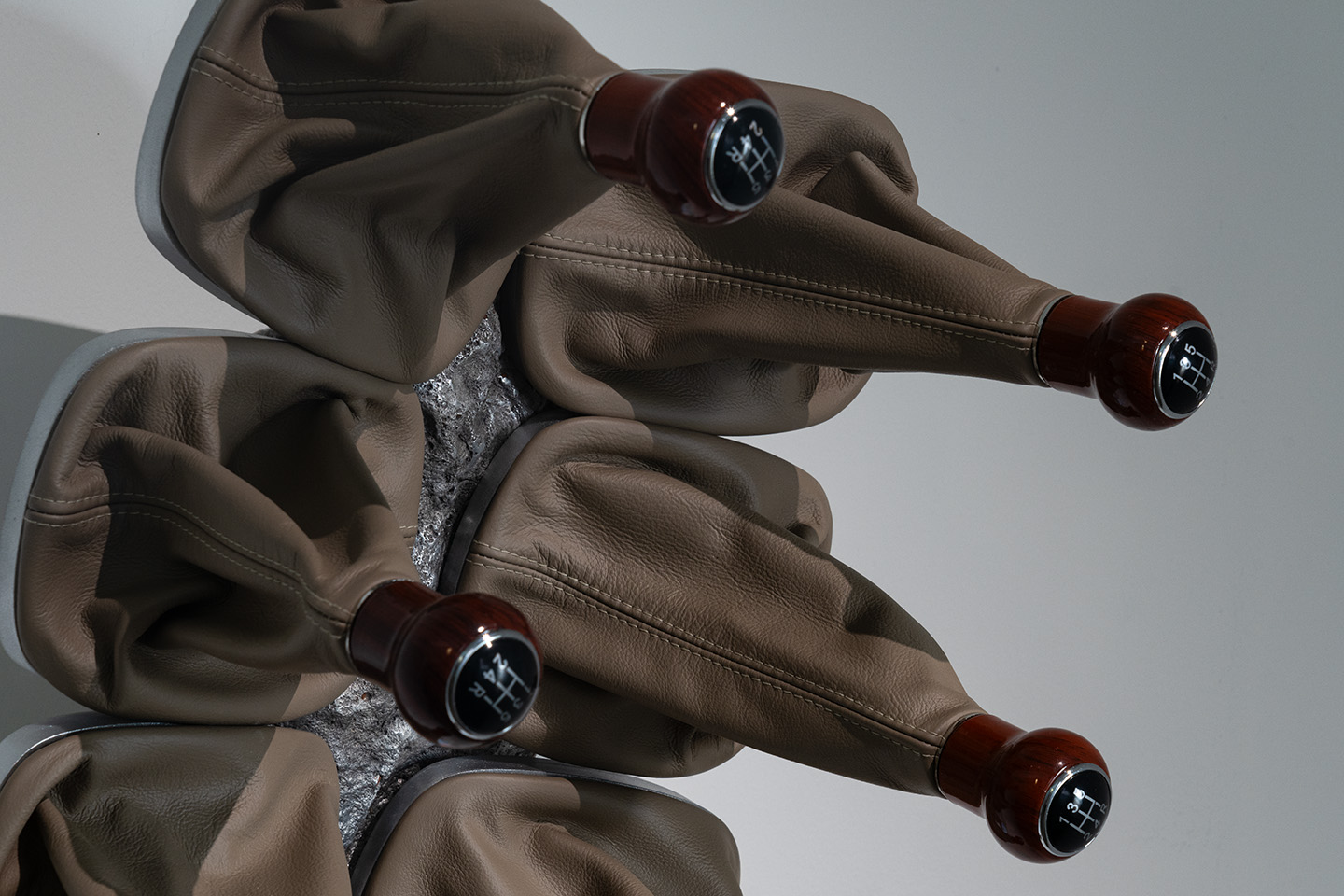
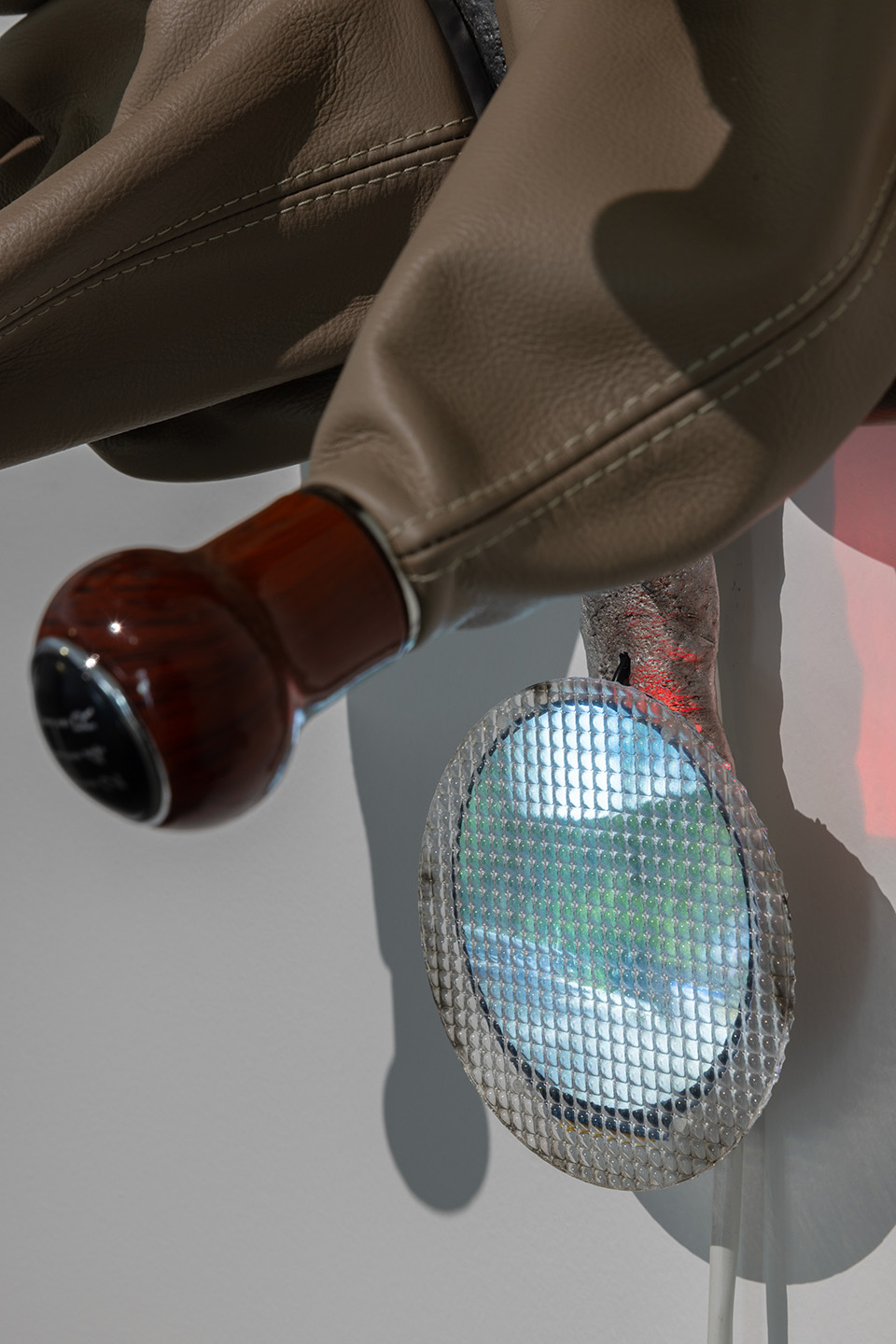
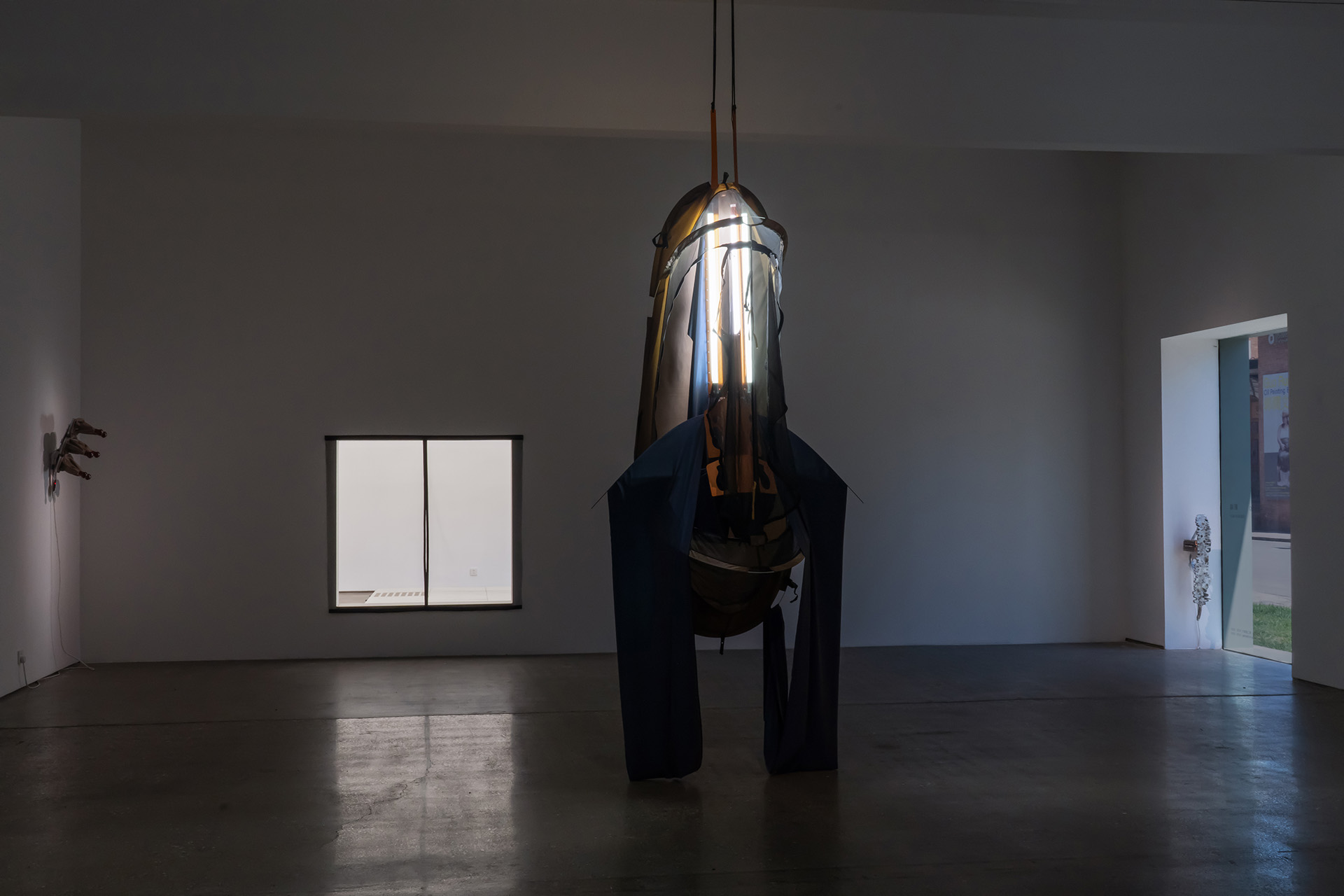
虫,2025,展览现场
Bug, 2025, Exhibition view
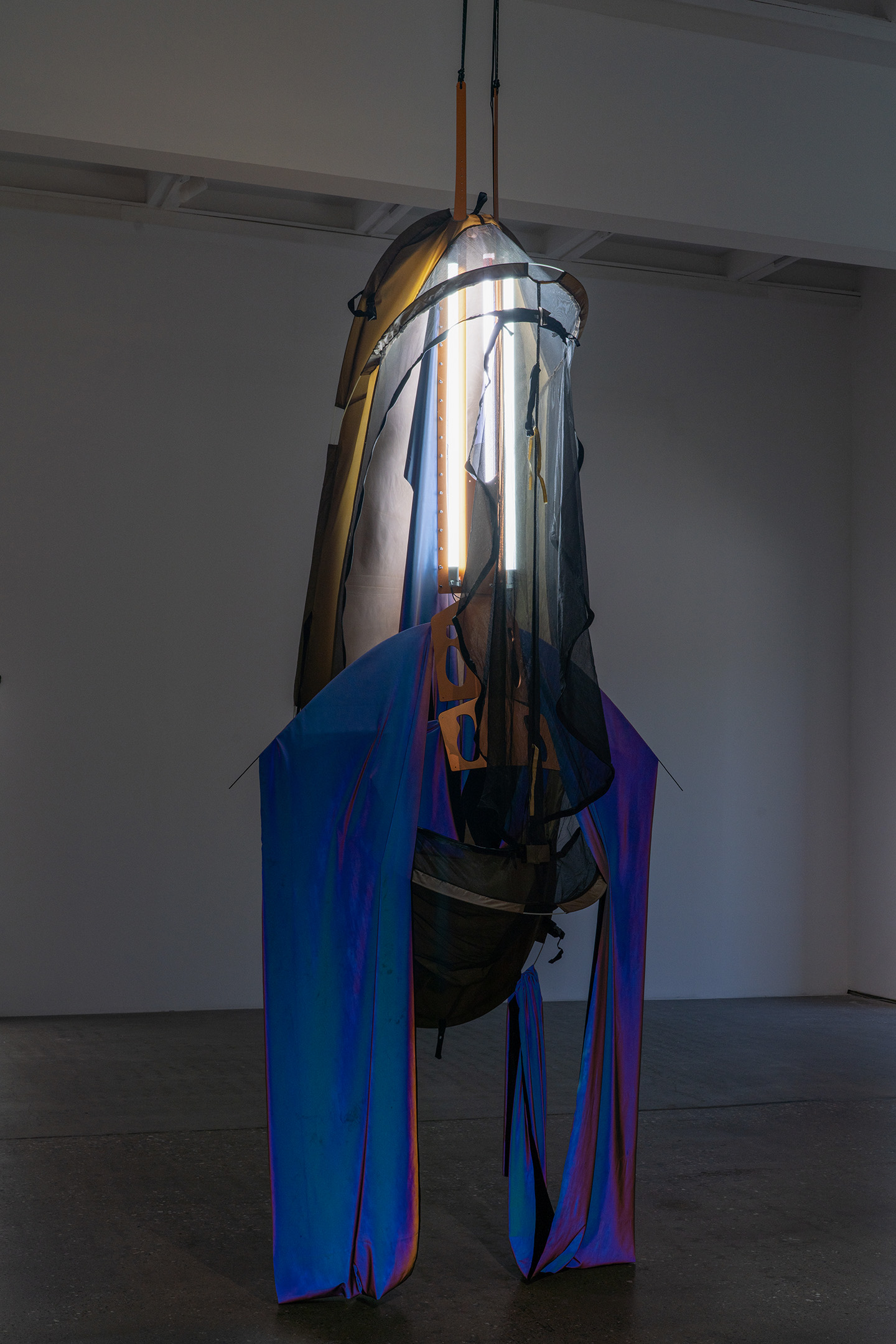
月亮,2024, 帐篷、布料、铝、LED、混合材料
The Moon, 2024, Tent, Fabric, Aluminum, LED, mixed media
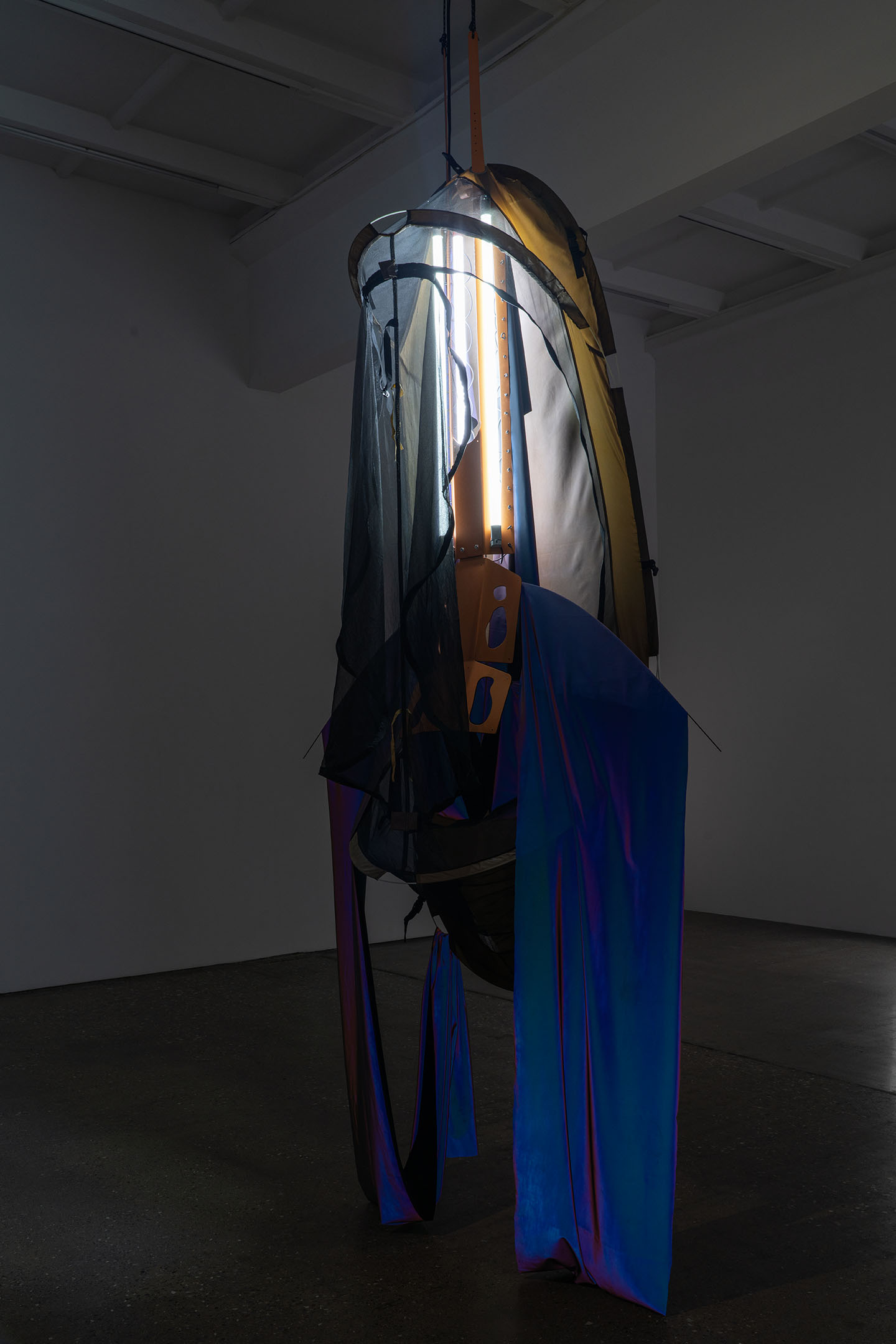
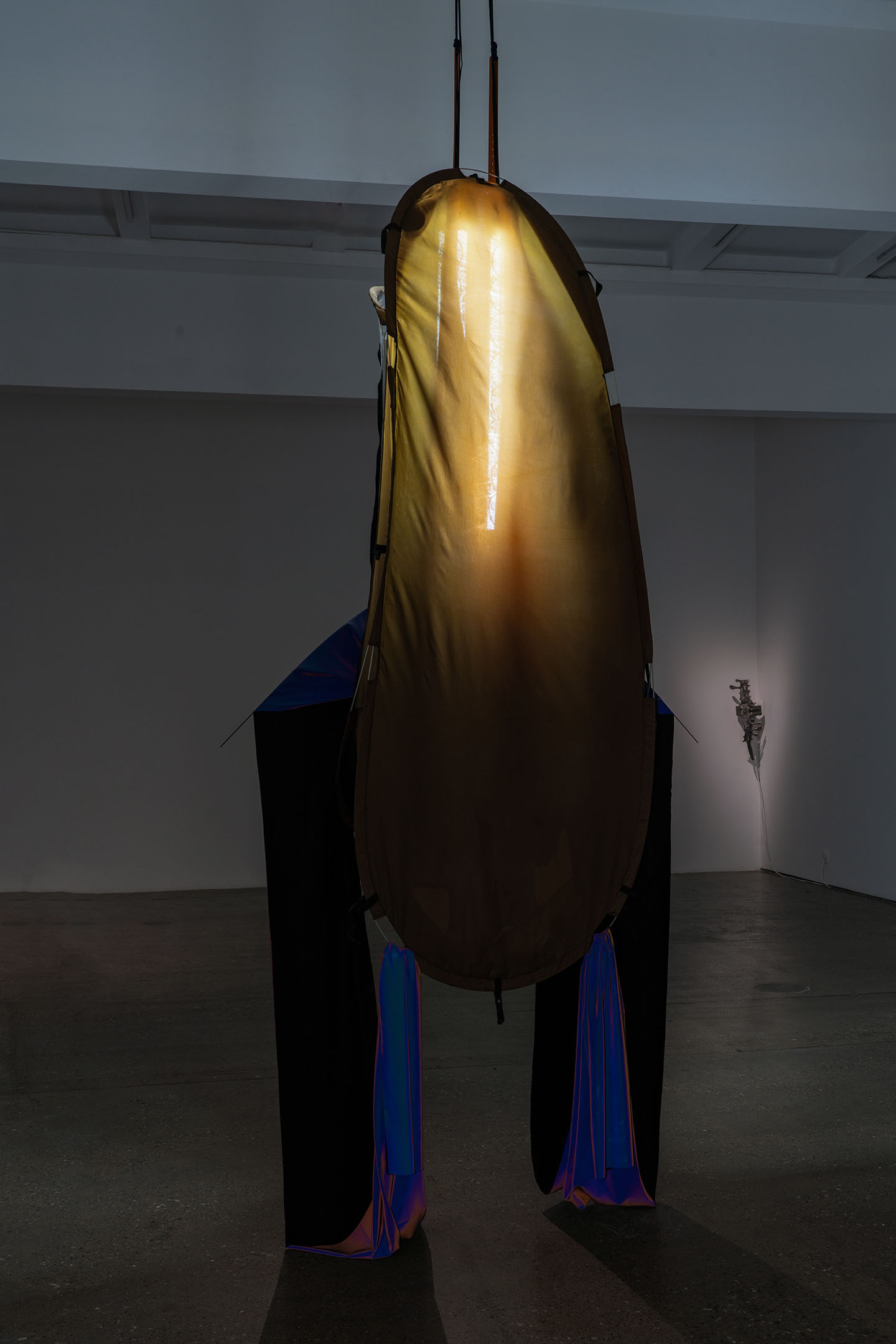
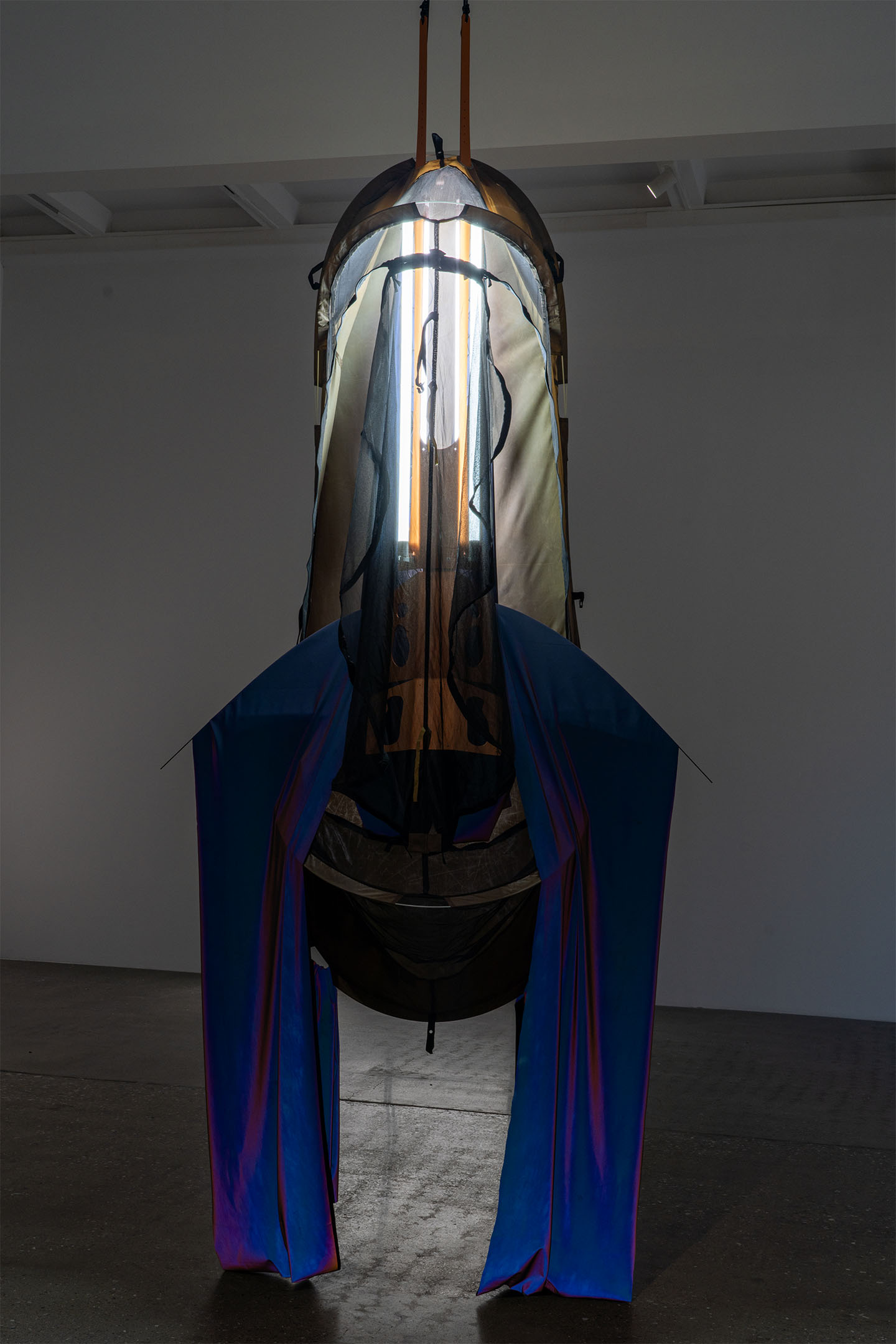
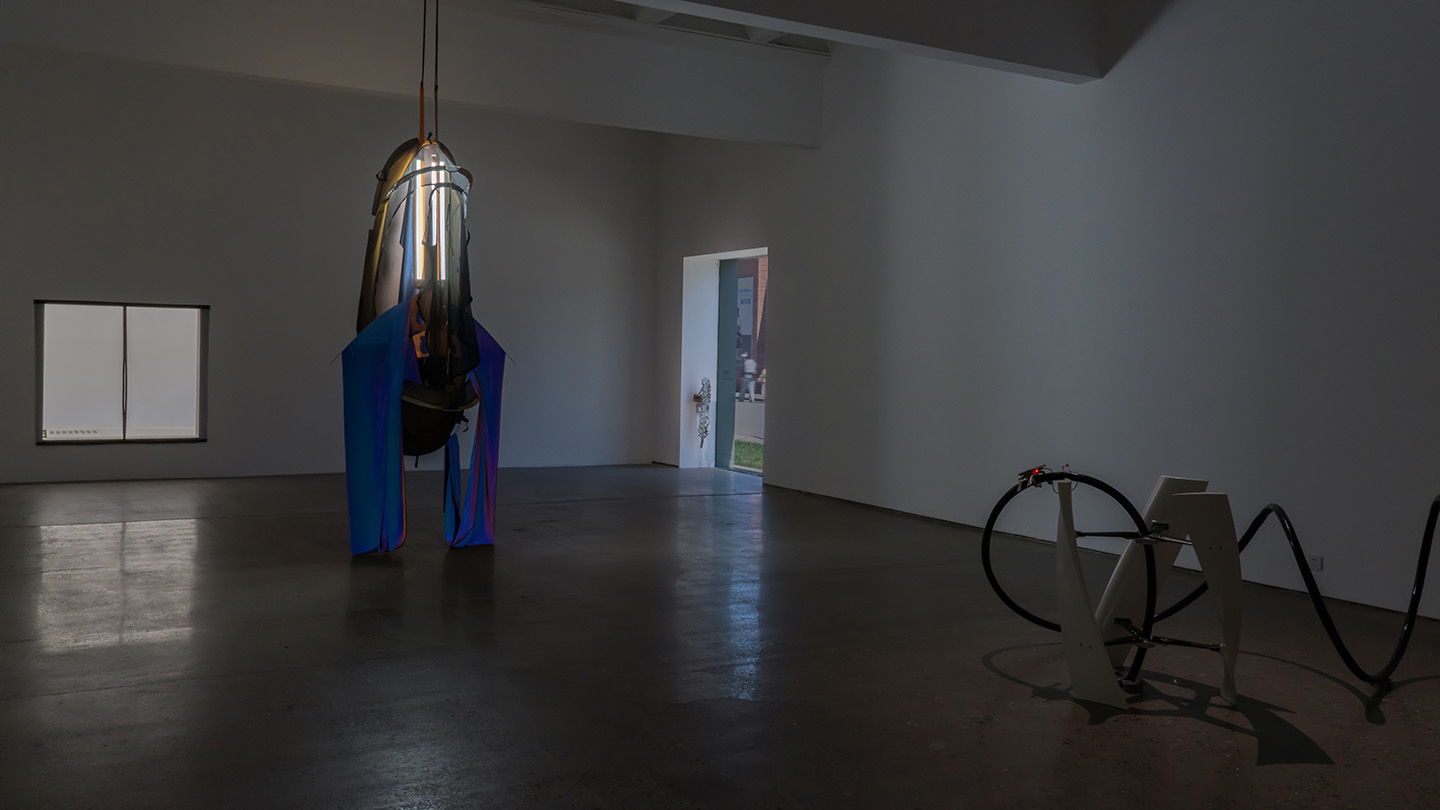
虫,2025,展览现场
Bug, 2025, Exhibition view
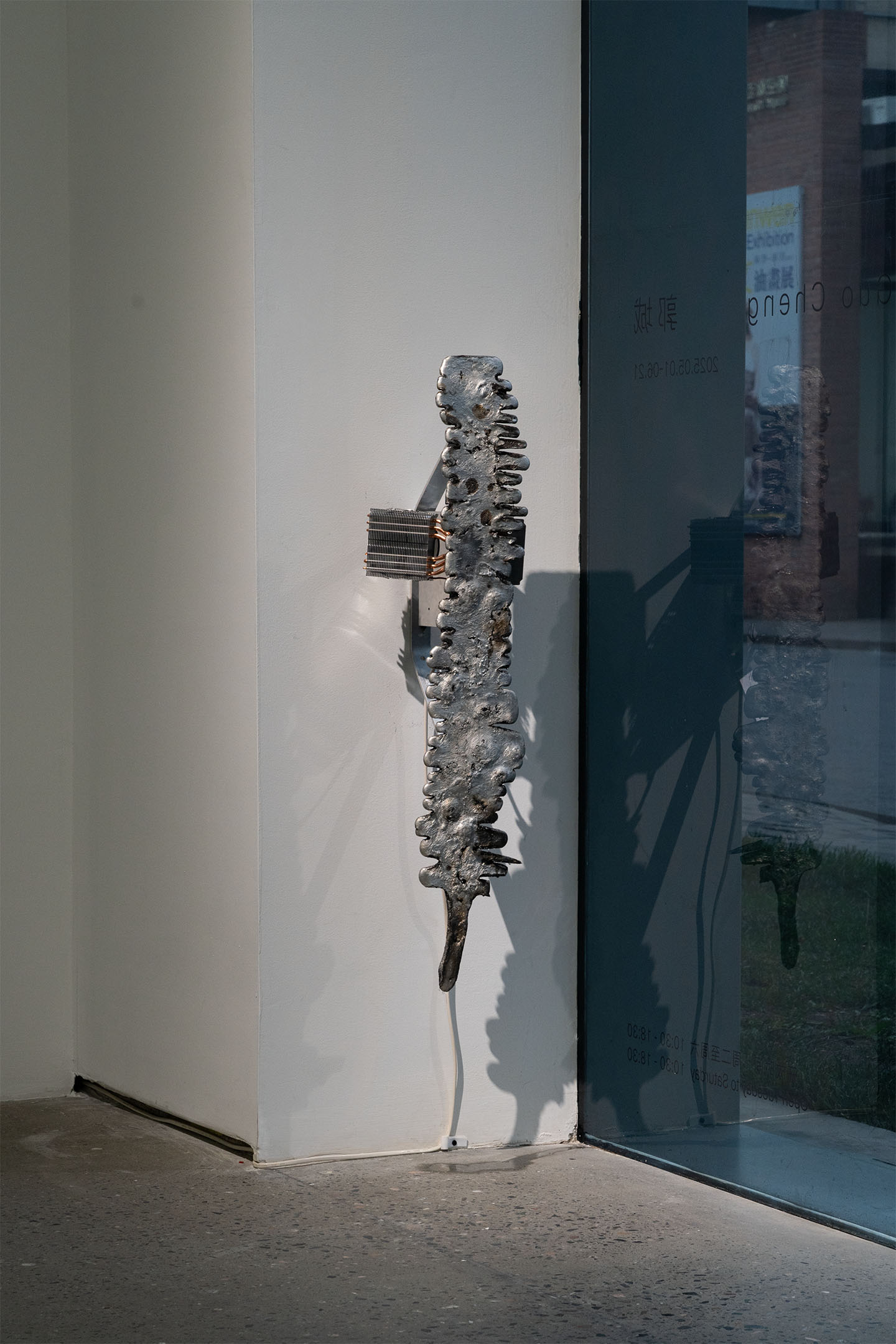
雾取 3669, 2024, 铝,定制电路、散热片、风扇
Fog Basker 3669, 2024, Aluminum, custom hardware,heatsink, fan
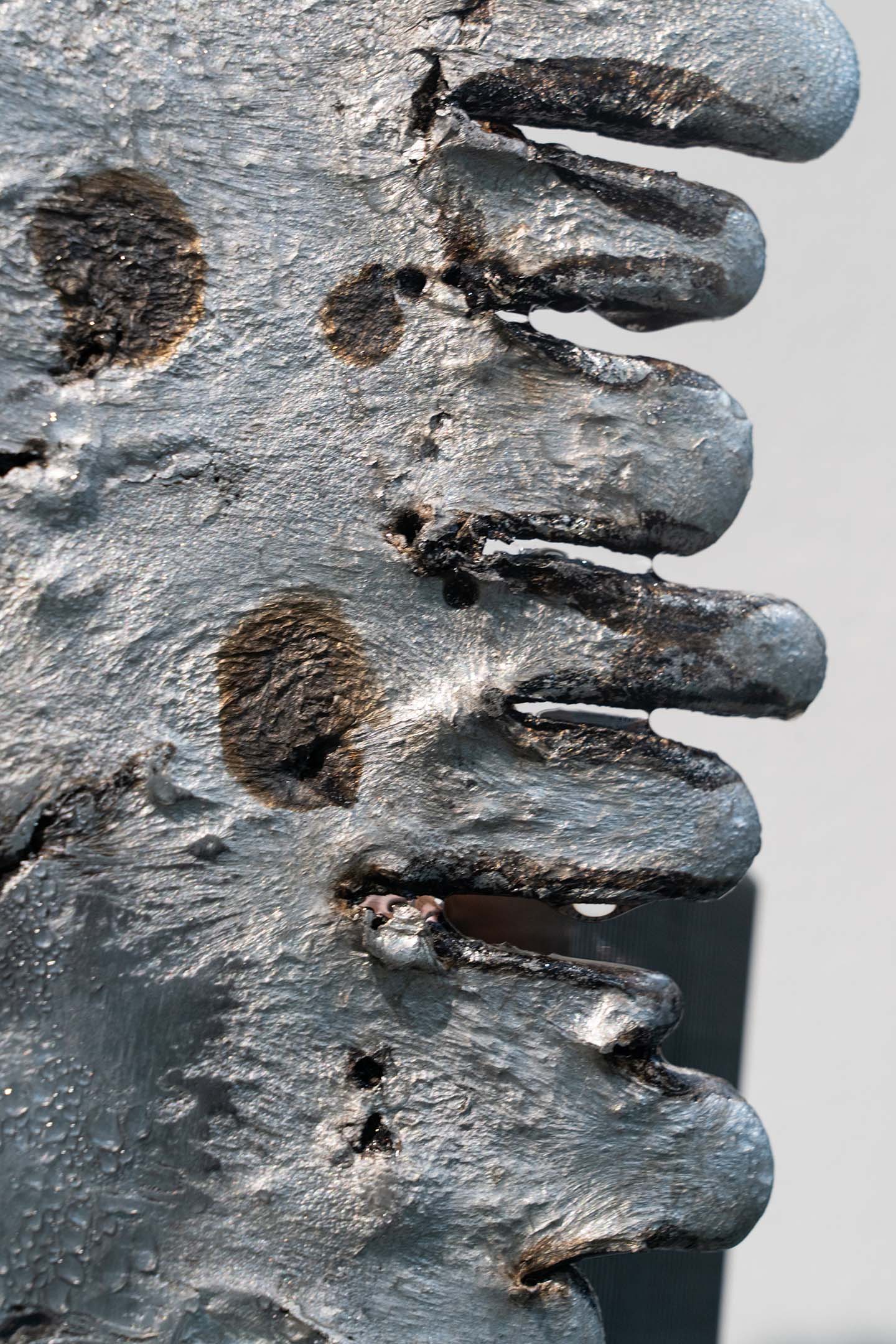
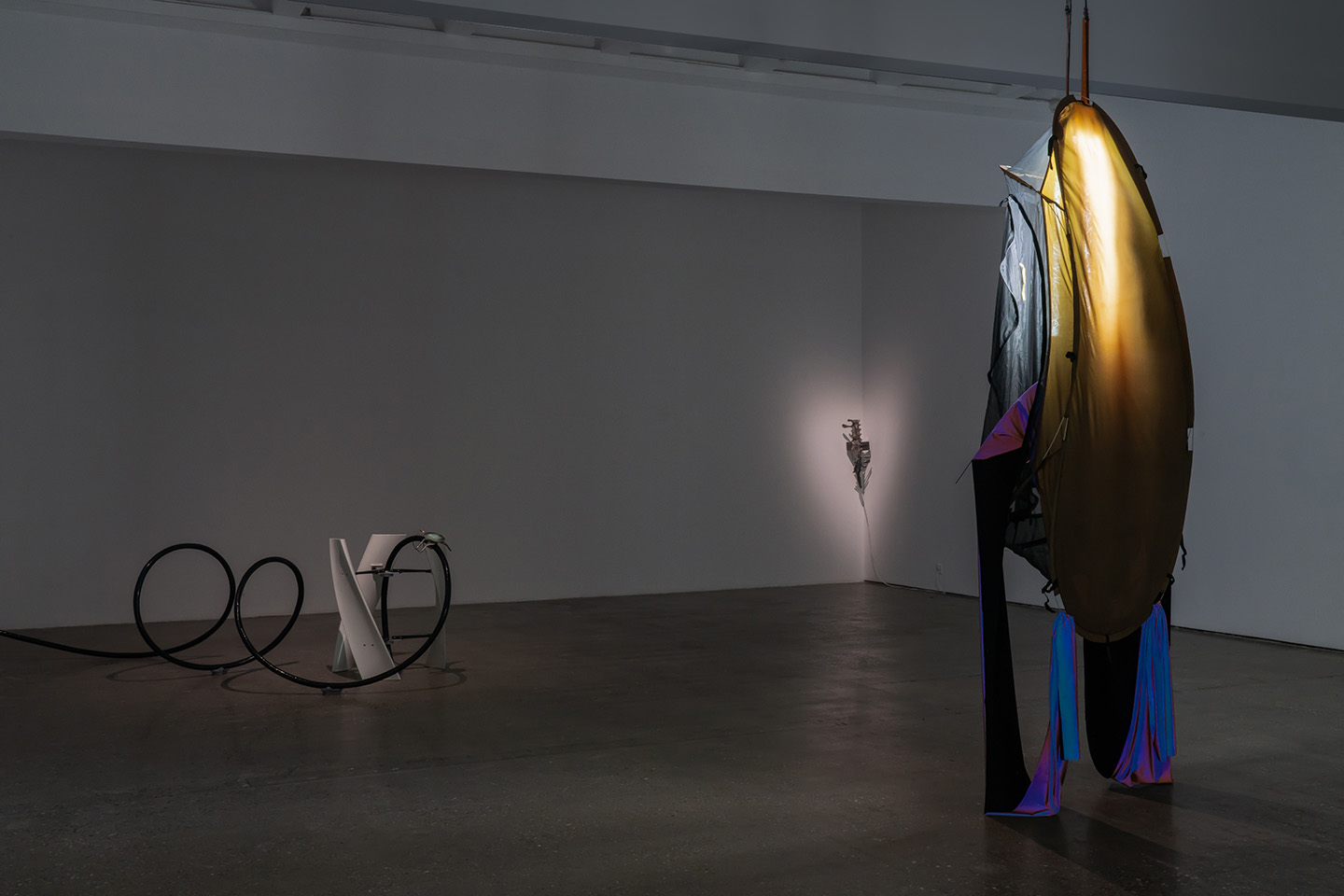
虫,2025,展览现场
Bug, 2025, Exhibition view
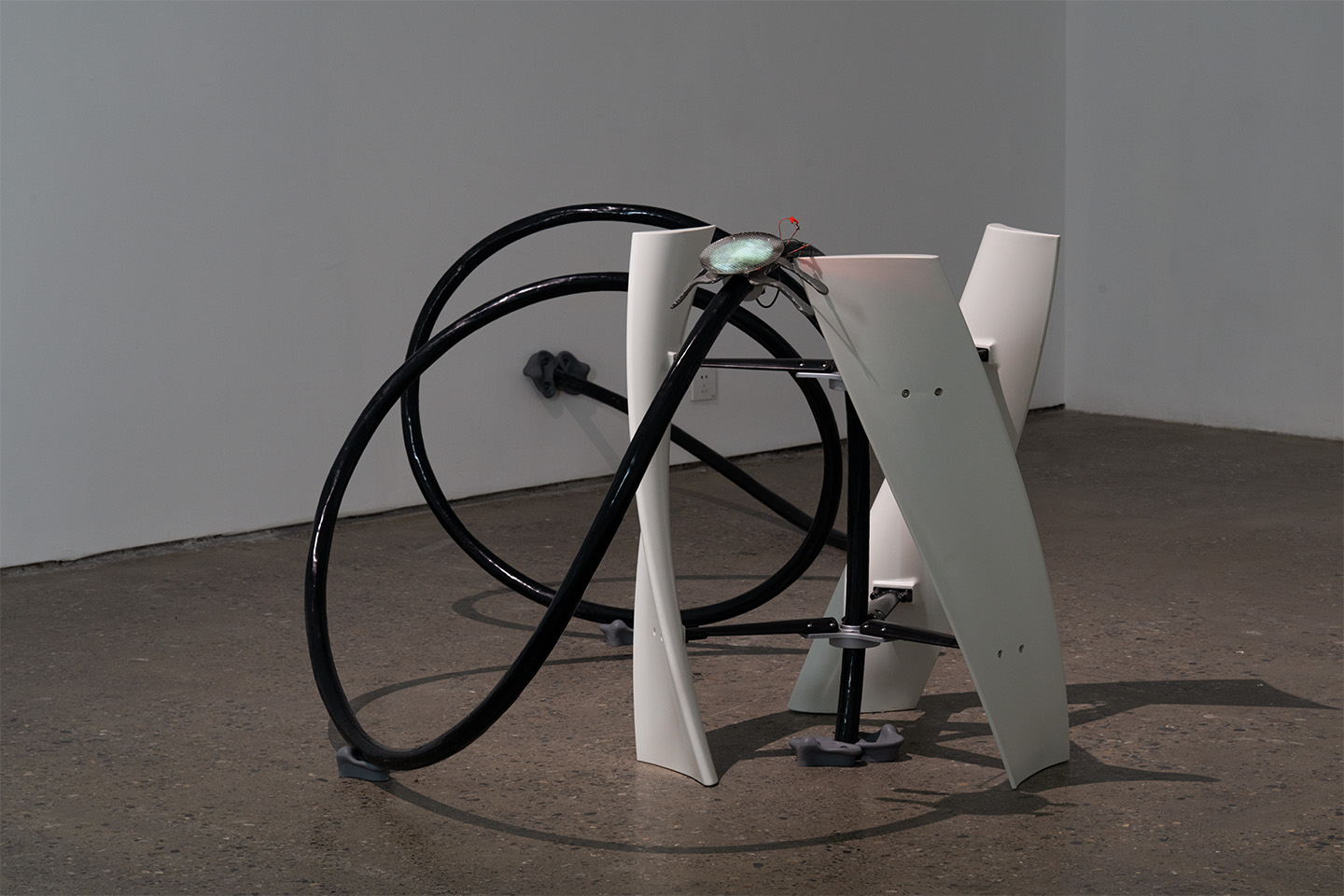
占位者 No.2, 2024, 风力发电机叶片、电缆、锡、LCD屏幕、混合媒介
Niche Squatter No.2, 2024, Wind turbine blades, cables, tin, LCD screen, mixed media
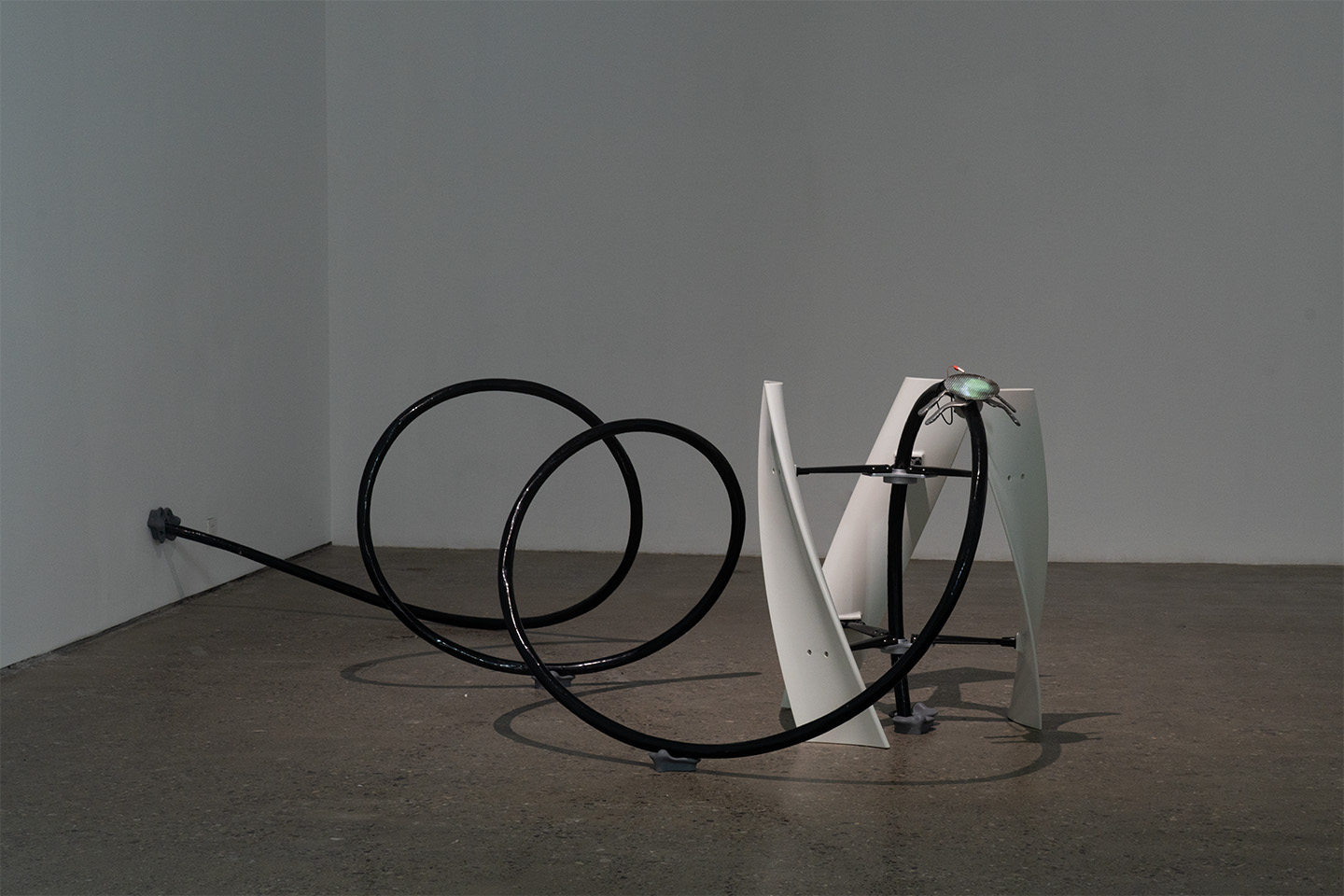
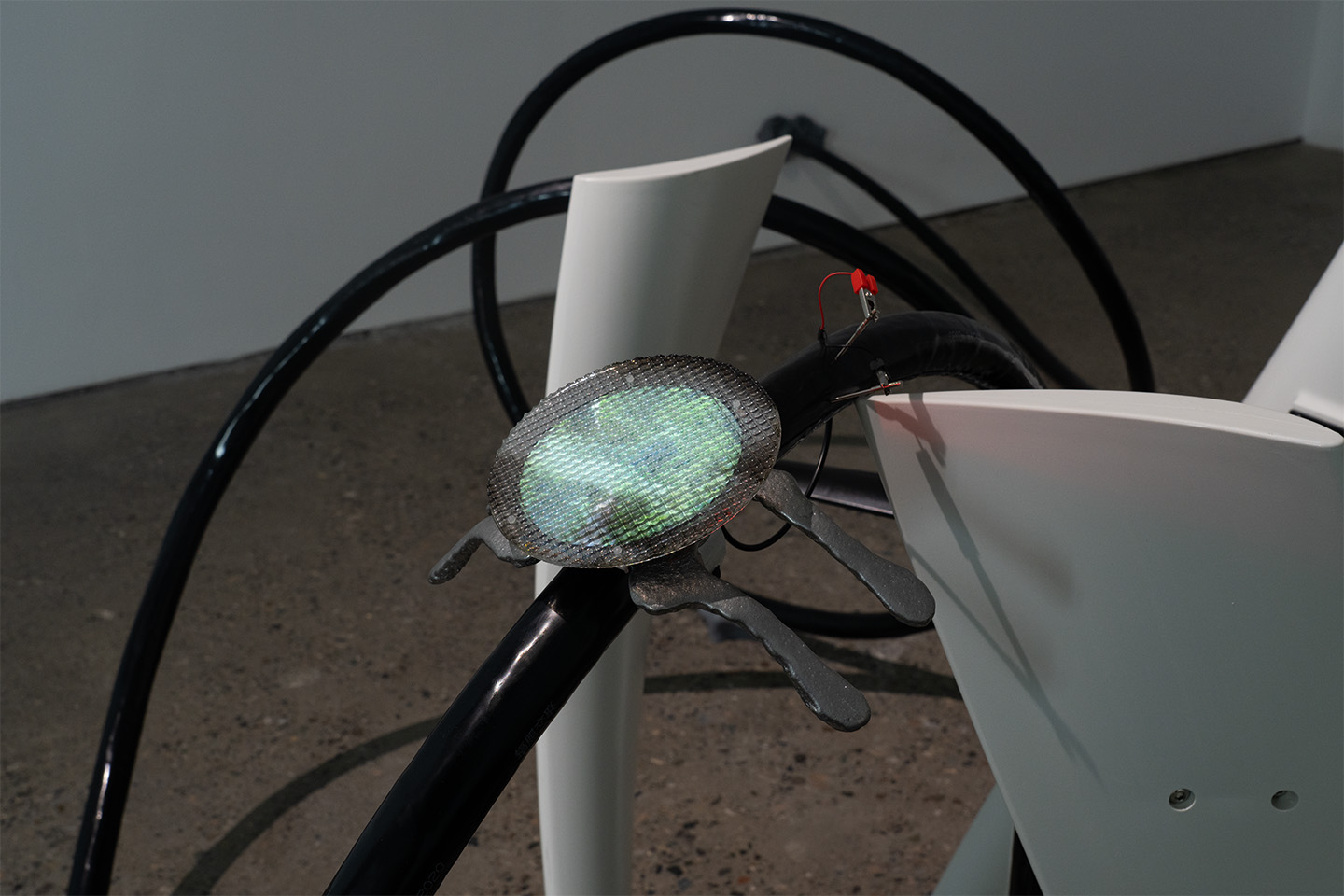
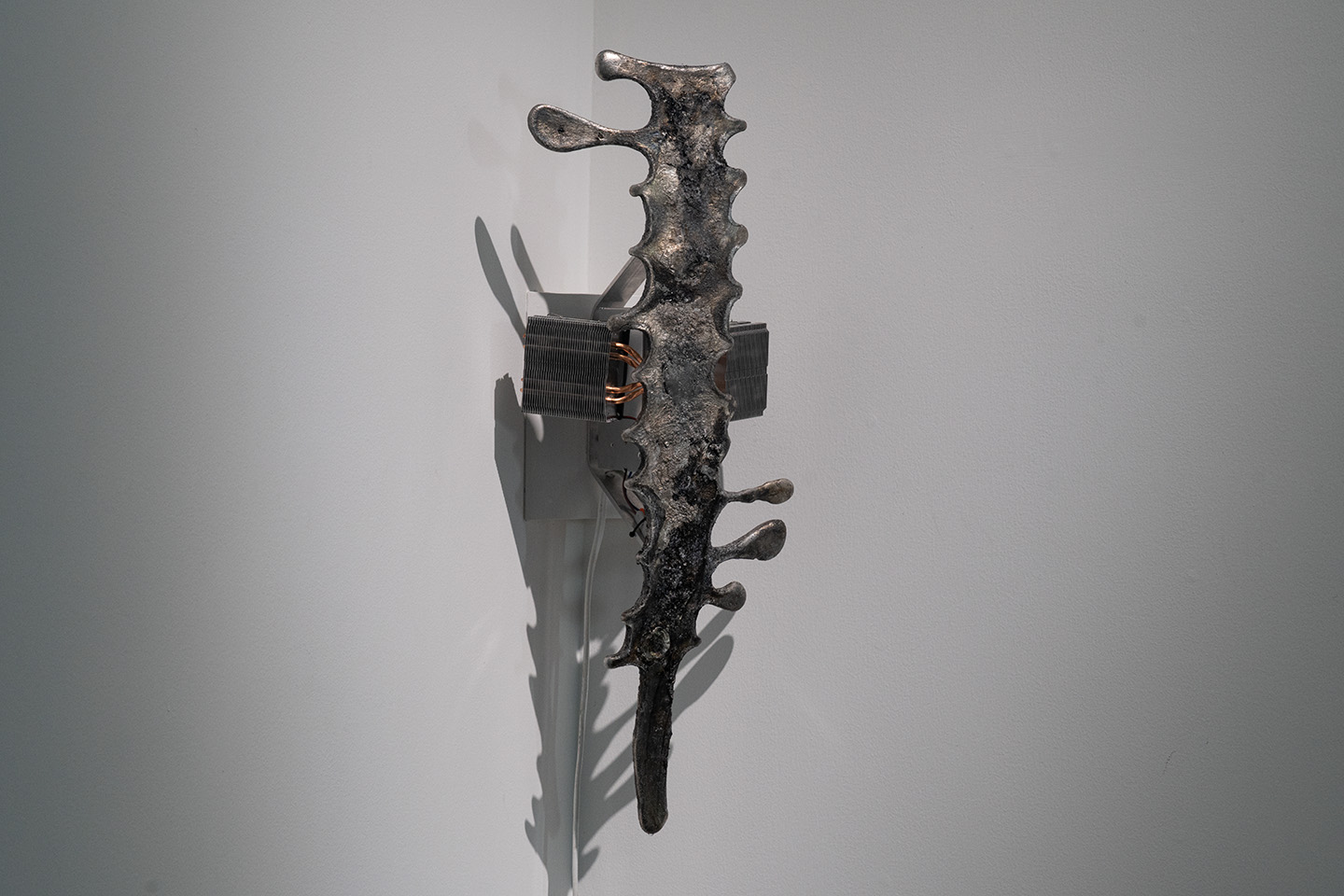
雾取 0235, 2024, 铝,定制电路、散热片、风扇
Fog Basker 0235, 2024, Aluminum, custom hardware, heatsink, fan
